Take Me to the Recipes
The Dominican Republic isn’t just a picture-perfect Caribbean escape with swaying palm trees and turquoise waters. It’s a place where vibrant culture and history weave their way into every aspect of life, and that most certainly includes food.
Dominican cuisine is a captivating blend of influences, a reflection of the island’s rich tapestry woven by Taíno ingenuity, European colonization, and African heritage. But the story doesn’t end there. Geography and climate have also played a starring role, shaping the ingredients and cooking styles that define Dominican flavors.
So, get ready to embark on a culinary adventure that transcends the plate. We’ll explore how the Dominican Republic’s unique past, and present have culminated in a cuisine that’s both delicious and deeply authentic.
Take Me to the Recipes
Key Takeaways
- Diverse Culinary Landscape: The Dominican Republic’s culinary scene is as enchanting as its Caribbean surroundings, reflecting a fusion of cultures on the island of Hispaniola.
- Popular Snack – Tostones: Tostones, or twice-fried plantains, are a beloved Dominican snack. They are enjoyed for their crispy exterior and soft interior, often served with garlic or avocado dip.
- Spanish Influence in Sopa de Ajo: Sopa de Ajo, a garlic-rich soup, showcases the influence of Spanish cuisine on Dominican cooking. The soup, featuring poached eggs and paprika, is a comforting dish balanced with a glass of light white wine or lemonade.
- La Bandera Dominicana – A Flag-inspired Dish: La Bandera, meaning “The Flag,” is a staple Dominican dish representing the colors of the national flag with a combination of rice, beans, and meat. It is often served with a creamy orange and milk drink called Morir Soñando.
- Sancocho – Hearty Stew for Special Occasions: Sancocho is a rich and hearty stew reserved for special occasions. Made with various meats, tubers, and corn, it is presented in a deep bowl and pairs well with white rice or avocado slices.
- Coastal Delight – Pescado con Coco: Pescado con Coco combines fresh fish with the tropical flavor of coconut, reflecting the coastal heritage of the Dominican Republic. It is best enjoyed with a crisp white wine or coconut water.
- Unique Desserts – Habichuelas con Dulce and Dulce de Leche Cortada: Habichuelas con Dulce, a sweet creamed beans dessert, and Dulce de Leche Cortada, a curdled milk dessert, highlight the Dominican Republic’s innovative culinary spirit in creating unique sweet concoctions. These desserts are complemented by Dominican coffee, cinnamon tea, or a rum punch called Ron Ponche.
Where is the Dominican Republic?

The eastern two-thirds of the island of Hispaniola, east of Haiti, between Cuba and Puerto Rico in the Caribbean, north of the Caribbean Sea and south of the North Atlantic Ocean.


Index to the Contents
- Take Me to the Recipes
- More Articles
- 10 Fascinating Facts about the Dominican Republic
- The Dominican Republic History and the Effect It Has Had on the Cuisine
- How The Dominican Republic’s Climate and Geography Have Influenced the Cuisine
- Understanding the Essence of The Dominican Republic Cuisine
- The Dominican Republic Culinary Traditions
- Exploring The Dominican Republic’s Ingredients
- Mastering The Dominican Republic Cuisine Cooking Techniques
- Traditional Dominican Republic Food
- Exploring The Dominican Republic Street Food
- The Most Popular the Dominican Republic Recipes
- What are the Health Implications of The Dominican Republic Cuisine?
- The Dominican Republic’s National Dish
- The Dominican Republic Recipes you can try in your own kitchen
- Conclusion
- FAQ’s
You may also be interested in the following Articles
- North and South American Cuisine – A Culinary Expedition
- Europe Cuisine: Savor the Continent’s Best Culinary Secrets!
- African Cuisine: Discover the Bold Flavors & Global Charm!
- Asian Cuisine Unlock its Secrets – Taste, Health & Global Influence!
Savor iconic Dominican Republic Food Recipes – Click on each tantalizing picture to open up the Recipe.
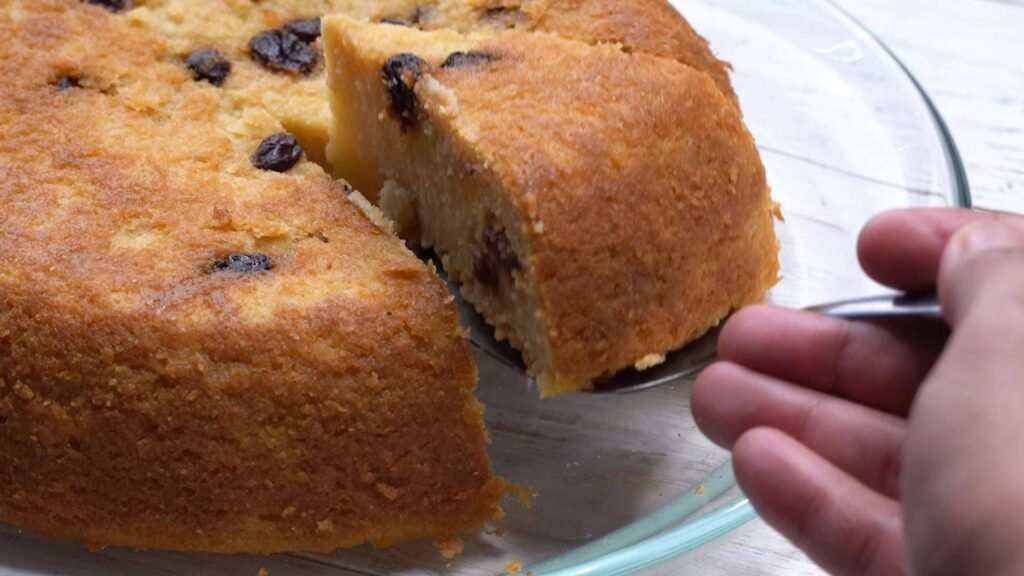
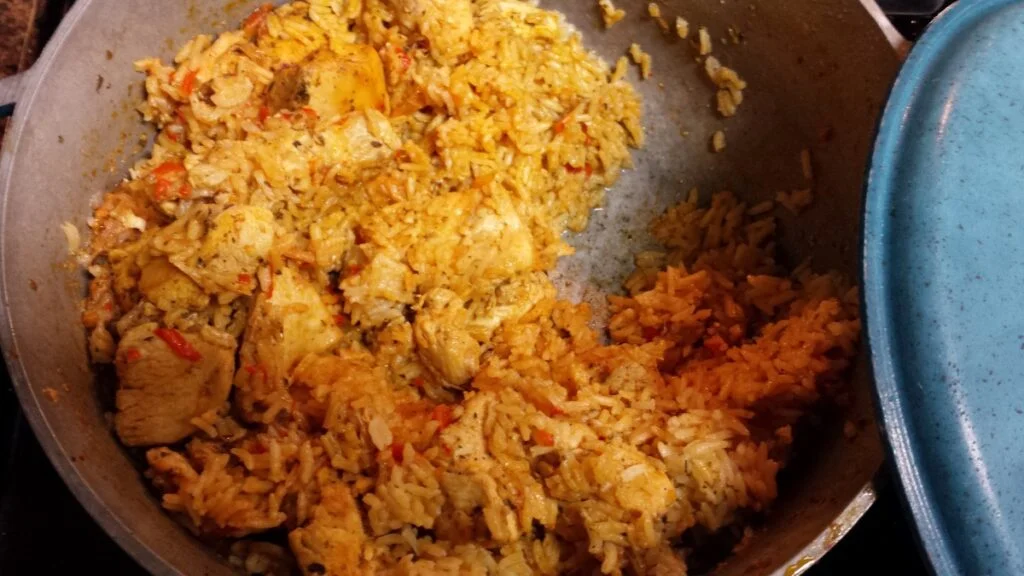

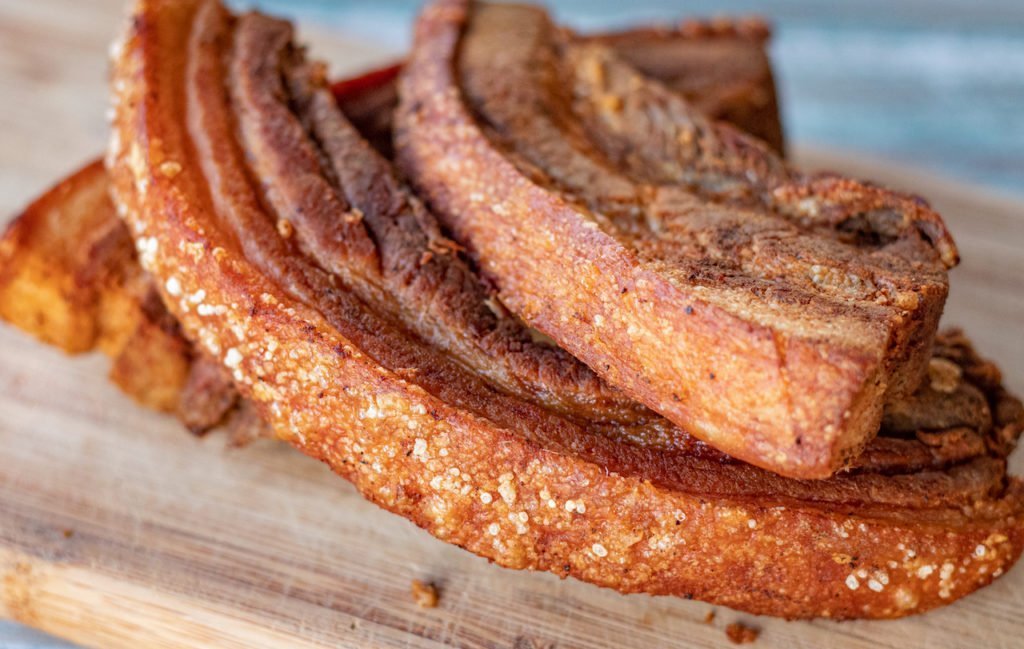

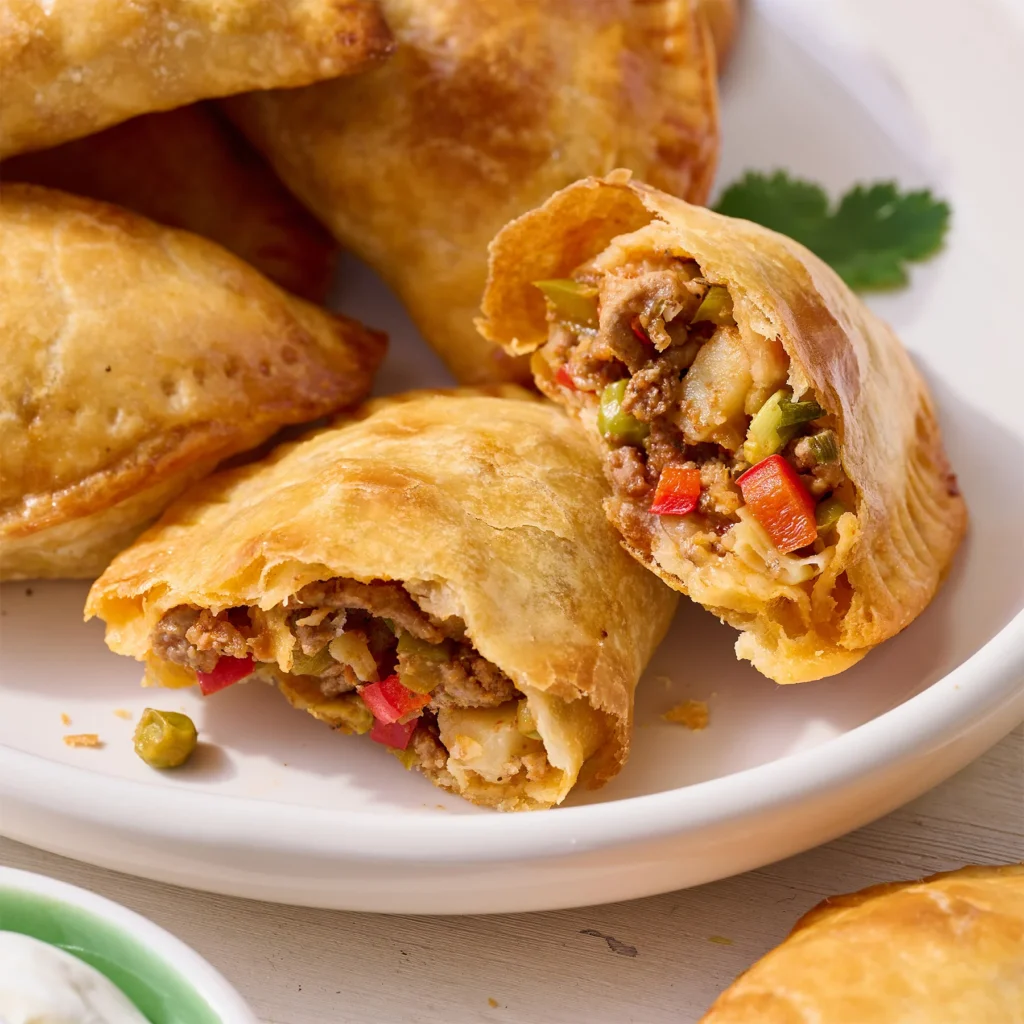


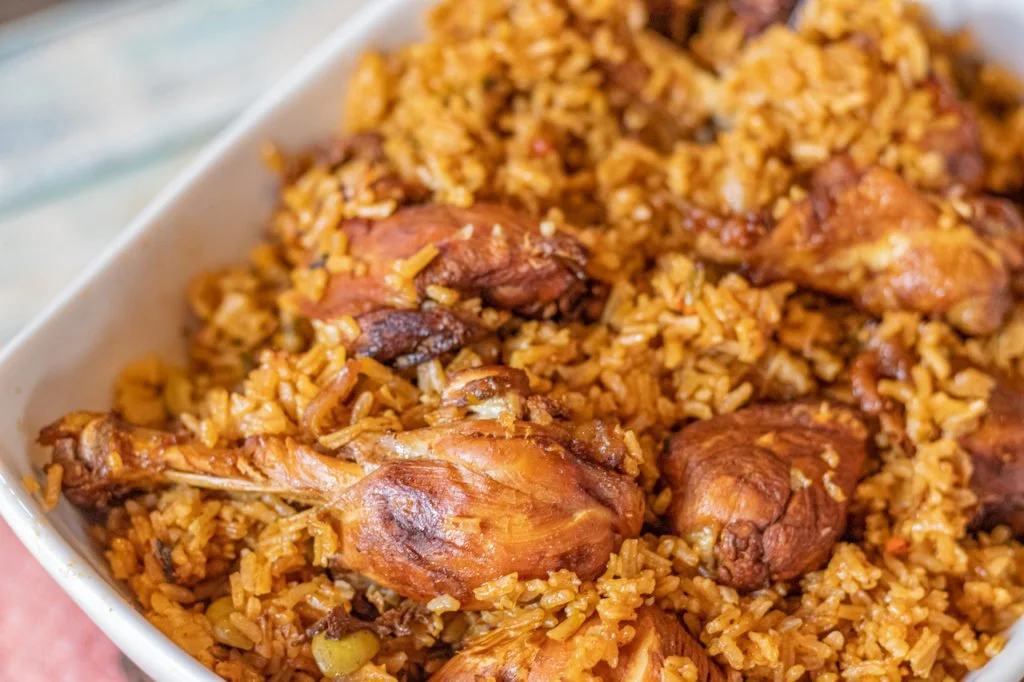
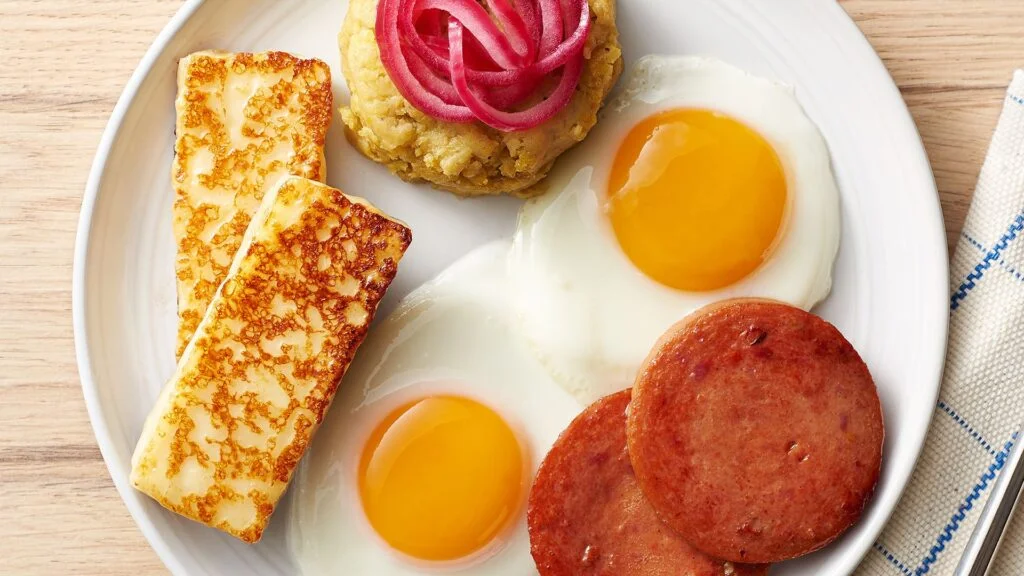
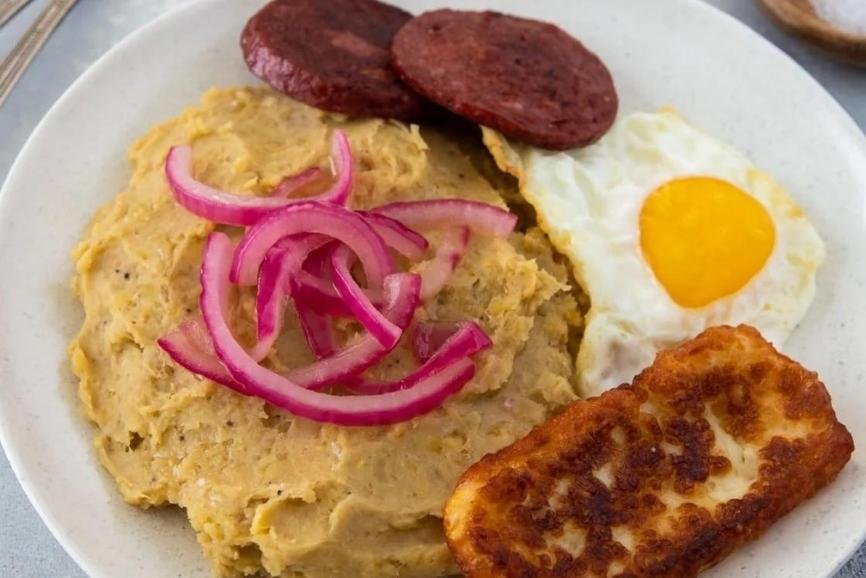
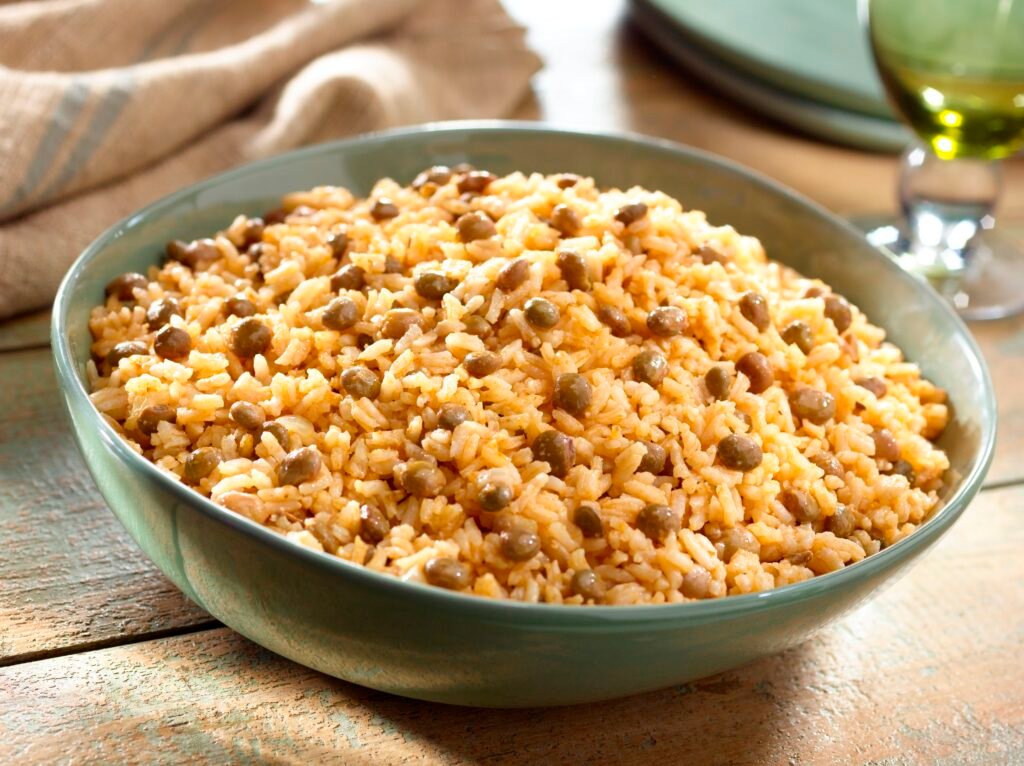
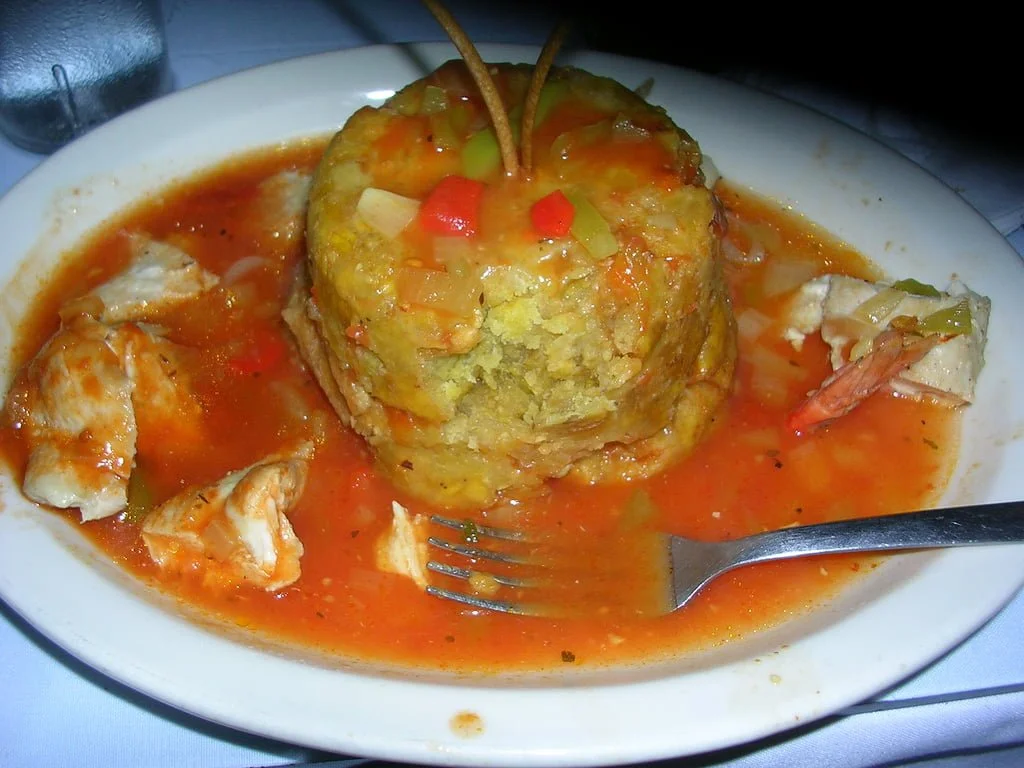

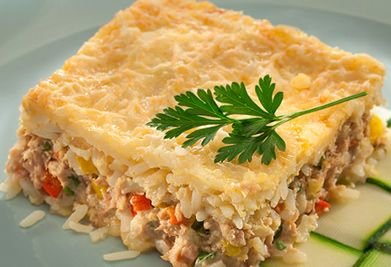

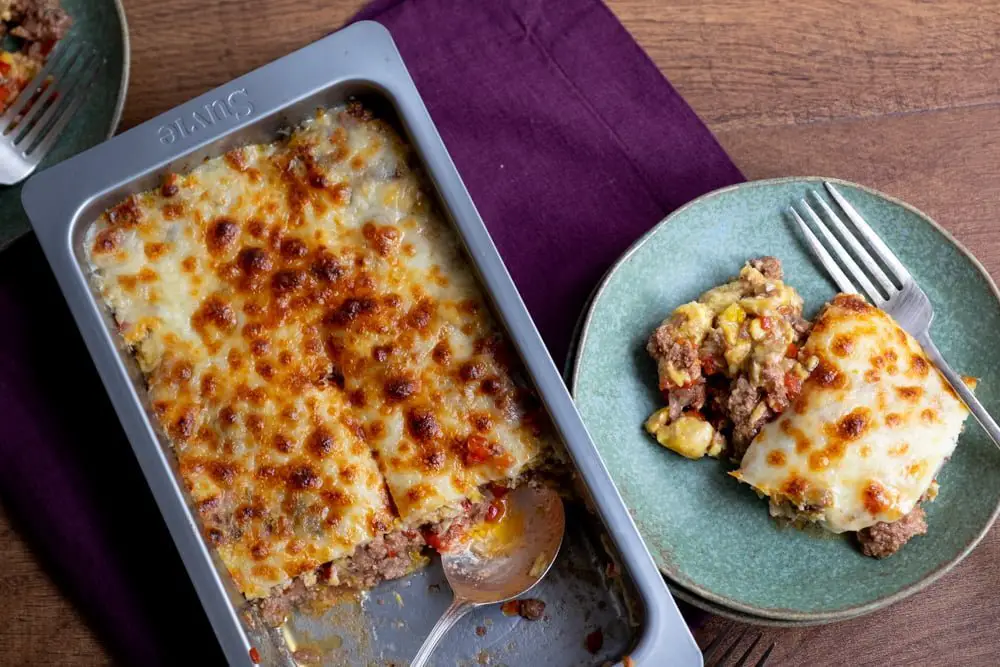
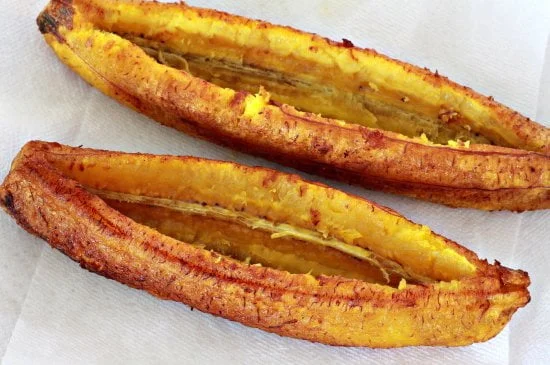



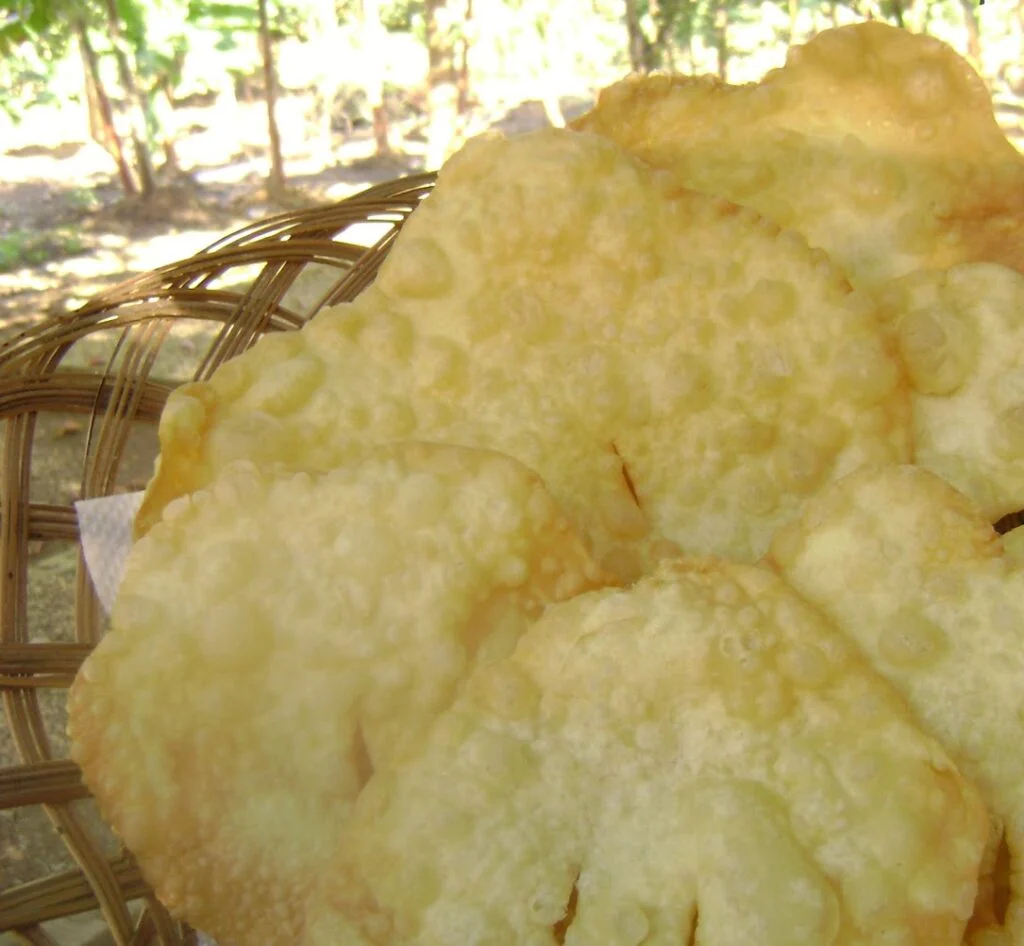
10 Fascinating Facts about the Dominican Republic

The Dominican Republic captivates with its turquoise waters and swaying palm trees, but this Caribbean gem boasts more than just postcard-perfect beauty. Dive into the unexpected with these 10 fascinating facts about the Dominican Republic:
The Amber Capital of the World
Millions of years ago, the Dominican Republic was a haven for prehistoric life. Now, the island is a treasure trove of amber, fossilized tree resin. You might even find a tiny dinosaur or insect perfectly preserved within!
Baseball is King

Step aside soccer, baseball reigns supreme in the Dominican Republic. The country boasts the second-highest number of Major League Baseball players in the world, with superstars like David Ortiz and Vladimir Guerrero Jr. hailing from the island.
Catch a local game and experience the electrifying energy!
The Dominican Republic Owns Half an Island
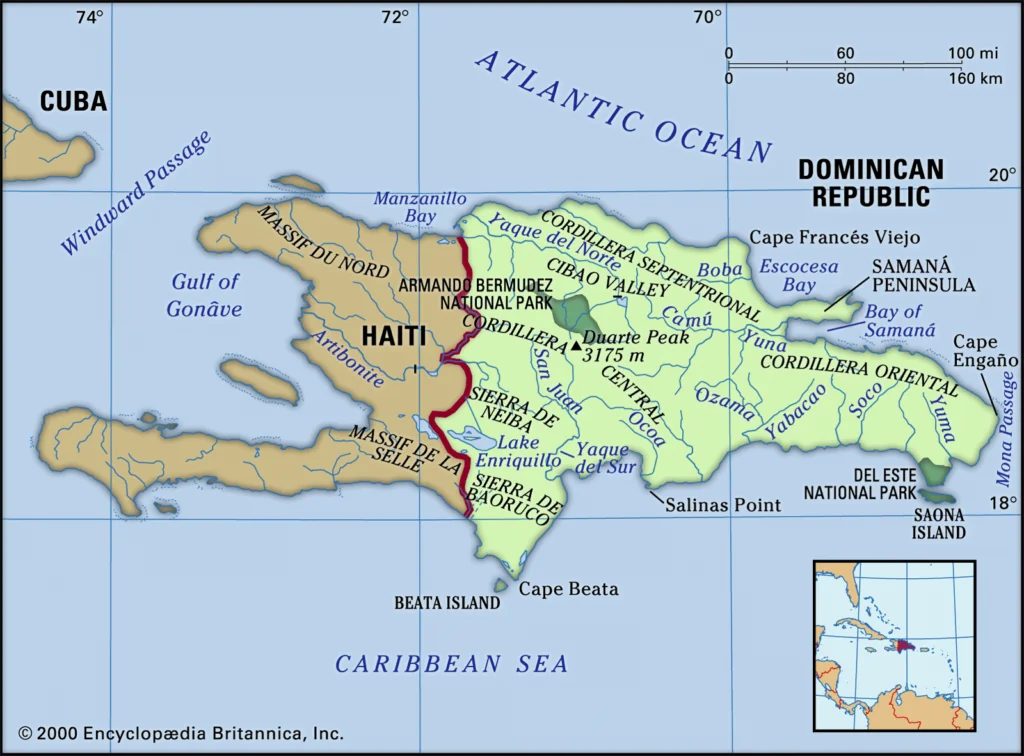
Hispaniola, the island shared with Haiti, is the second largest in the Caribbean. The Dominican Republic occupies the eastern two-thirds, creating a unique cultural and historical blend.
Whales Give Birth Here

The warm waters of Samaná Bay transform into a haven for humpback whales every winter. From January to March, witness these majestic creatures calving and frolicking, making for an unforgettable wildlife encounter.
Birthplace of Merengue
Sway your hips to the irresistible rhythm of merengue! This lively dance style, characterized by its fast tempo and sensual moves, originated in the Dominican Republic. You’ll hear its infectious beat everywhere, from bustling streets to dance clubs.
The Bible Makes it onto the Flag

The Dominican Republic is the only country in the world to feature a representation of the Bible on its national flag. The open book signifies the importance of religion and faith in the nation’s history and culture.
Land of Larimar
The Dominican Republic holds a unique gem – larimar. This captivating blue stone, found nowhere else on earth, is prized for its mesmerizing turquoise hues and swirling patterns. Look for exquisite larimar jewelry as a souvenir of your Dominican adventure.
Dominicans Love Mama Juana
This potent concoction is a local legend. Mama Juana is a rum-based alcoholic beverage infused with herbs, tree bark, and sometimes even animal parts. While not for the faint of heart, it’s considered an aphrodisiac and a powerful digestive aid.
The Cable Car Climbs Up Pico Duarte

Looking for a scenic adventure? Take a ride on the only cable car in the Caribbean! Soar up the slopes of Pico Duarte, the highest peak in the Antilles, and witness breathtaking panoramic views of lush rainforests and dramatic mountain ranges.
Gold Still Glitters Here
The Dominican Republic has a rich history of gold mining dating back to the Taíno people. While large-scale mining continues, you might even stumble upon a speck of gold dust while panning for it in certain rivers – a treasure hunt with a historical twist!
The Dominican Republic History and the Effect It Has Had on the Cuisine
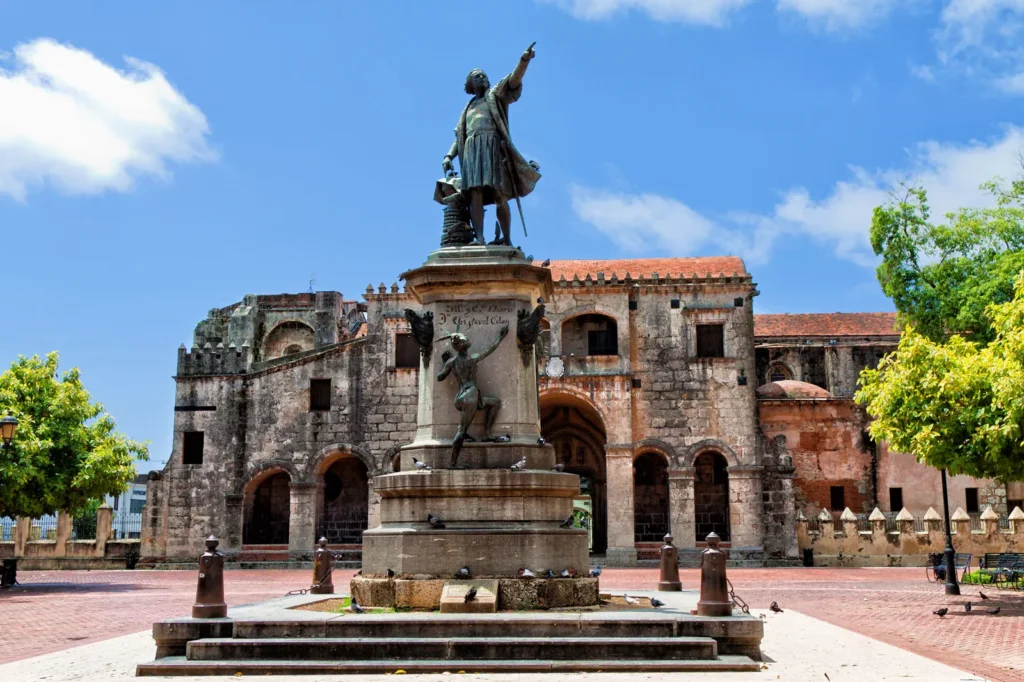
The Dominican Republic boasts a vibrant and unique cuisine, a delicious reflection of its rich and diverse history. Let’s embark on a flavor-filled adventure, exploring how each historical period has shaped the Dominican culinary landscape:
Pre-Columbian Era (Before 1492): The Indigenous Influence
Long before European arrival, the Taíno people thrived on the island of Hispaniola, cultivating a deep connection with the land.
They practiced farming, fishing, and hunting, leaving a lasting mark on Dominican cuisine with the introduction of staple ingredients like cassava (used for making bread and other dishes), sweet potatoes, yams, and maize (corn).
Colonial Era (1492-1821): A Spanish Imprint

In 1492, Christopher Columbus landed on Hispaniola, paving the way for Spanish colonization. The city of Santo Domingo, established in 1496, became the first permanent European settlement in the Americas.
This era brought a wave of new ingredients like wheat, rice, sugar cane, citrus fruits, and olive oil, significantly impacting Dominican cooking and laying the foundation for many popular dishes.
The Influence of Slavery
The Dominican Republic wasn’t heavily impacted by enslaved Africans until the late 16th and throughout the 17th centuries. Their influence on Dominican cuisine is significant and can be seen in several ways:
- Introduction of Ingredients: Enslaved Africans brought with them new plants and vegetables not previously known on the island, such as okra, black-eyed peas, and certain peppers. These ingredients added variety and depth of flavor to Dominican cooking.
- Spices and Cooking Techniques: Africans also likely introduced new spices and cooking techniques used in their homeland. This could include the use of palm oil for frying and the use of peppers beyond the indigenous chili peppers already present.
- Focus on Beans and Grains: West African cuisine traditionally relied heavily on beans and grains as a source of sustenance. This focus is reflected in the prominent role that beans (especially black beans and kidney beans) and rice play in Dominican cuisine today.
It’s important to note that the exact influence of enslaved Africans on Dominican cuisine is difficult to pinpoint entirely. Historical records are often limited, and the cultural exchange between enslaved Africans and the existing population was complex. However, the presence of these new ingredients, spices, and a focus on certain staples all point to the undeniable mark left by enslaved Africans on the Dominican culinary landscape.
Haitian Occupation (1822-1844): A Blend of Flavors
From 1822 to 1844, the island of Hispaniola was under Haitian rule. This period saw a fusion of culinary influences, with Haitian dishes like “diri kole ak pwa” (rice and beans) and “griot” (fried pork) finding their way onto Dominican tables, merging seamlessly with existing flavors.
Independence and Early Republic (1844-1930): The Birth of Dominican Classics
The declaration of independence in 1844 marked a pivotal moment in Dominican history. This era also saw the emergence of some of the Dominican Republic’s most iconic dishes, including mangú (mashed plantains), sancocho (hearty stew), and tostones (fried green plantains), dishes that continue to be savored today.
Trujillo Era (1930-1961): A Resurgence of Tradition

The dictatorship of Rafael Trujillo (1930-1961) undeniably left its mark on the country. Interestingly, his regime also played a role in shaping the culinary landscape.
Trujillo promoted a sense of national identity, leading to a resurgence of traditional Dominican foods and influencing even the aesthetics of Dominican cuisine.
Modern Period (1961-Present): A Global Embrace
Since 1961, the Dominican Republic has undergone democratic transitions and significant economic changes. These developments also impacted the culinary scene, with tourism and globalization introducing international flavors to the mix. Fast food, seafood dishes, and fusion creations gained popularity, while staples like seafood, rice and beans, and plantains remained central to everyday meals.
References
- Encyclopedia Britannica: History of the Dominican Republic
- BBC News: Dominican Republic Profile
- Wikipedia: History of the Dominican Republic
The Influence of Climate and Geography on Dominican Republic cuisine

The Dominican Republic cuisine is a harmonious symphony of flavors, and its composition is deeply influenced by the diverse climate and geography that characterizes the island.
Nestled in the heart of the Caribbean, the nation’s culinary heritage is a product of its tropical climate, lush landscapes, and coastal abundance.
Abundant Agriculture in Tropical Terrain
The country’s fertile soil and tropical climate contribute to a bounty of fresh produce. Plantains, yucca, and a variety of exotic fruits thrive in the warm, sun-drenched environment, becoming integral components of Dominican dishes.
The abundance of agriculture not only shapes the daily diet but also inspires traditional recipes like the beloved Tostones, made from the plentiful green plantains.
Coastal Bounty in Dominican Republic cuisine
With a coastline that stretches along the azure Caribbean Sea and the Atlantic Ocean, seafood holds a prominent place in Dominican cuisine. Pescado con Coco, a dish combining fresh fish with the tropical flavor of coconut, exemplifies the coastal influence on local fare.
The availability of a diverse array of fish and shellfish allows for a rich tapestry of flavors, creating a culinary connection between land and sea.
Mountainous Terrain and Hearty Stews

The Dominican Republic’s diverse topography, encompassing verdant mountains and valleys, contributes to the creation of hearty stews like Sancocho. This dish, often reserved for special occasions, utilizes a variety of meats and tubers that thrive in the elevated regions.
The cool mountain air complements the warmth of this robust stew, creating a comforting culinary experience.
In summary, the Dominican Republic’s climate and geography serve as the culinary maestros guiding the creation of dishes that celebrate the island’s natural abundance.
From the coastal flavors inspired by the sea to the hearty stews nurtured in the mountainous regions, the diverse landscapes provide a sensory feast that mirrors the beauty and richness of the Dominican Republic.
Understanding the Essence of The Dominican Republic Cuisine

The Dominican Republic, a Caribbean gem where turquoise waters meet lush greenery, boasts a cuisine as vibrant and flavorful as its landscape. Unlike its island neighbors, Dominican food offers a unique tapestry of culinary influences, reflecting the rich history and cultural crossroads of the nation.
Here, we delve into the essence of Dominican cuisine, exploring what makes it stand out from the crowd.
A Fusion Feast: Spanish, African, and Taíno Influences
Dominican cuisine is a beautiful blend of cultural heritages. The arrival of Spanish conquistadors introduced essential ingredients like rice, onions, garlic, and olive oil.
These became the foundation for many Dominican dishes. The legacy of enslaved Africans is evident in the generous use of root vegetables (yams, plantains), beans, and spices. Additionally, the indigenous Taíno people left their mark with the use of cassava and the barbecue technique known as “barbcoa” (the root word for barbacoa).
This fusion of influences creates a complex and delicious flavor profile.
Simple Ingredients, Big Bold Flavors
Dominican cuisine embraces simplicity. Dishes often feature a few key ingredients, each allowed to shine in their natural state. Freshly caught seafood, free-range chicken, and flavorful beans are staples.
What elevates these simple ingredients are the bold and vibrant spices like adobo, a blend of oregano, cumin, and garlic powder, and sazón, a colorful mix of annatto seeds, achiote paste, and other aromatics. These spices add a depth of flavor and a distinct Dominican character to every dish.
A Celebration of Local Bounty
Dominican cuisine pays homage to the island’s abundant natural resources. Plantains, a versatile starchy fruit, are enjoyed in various forms, from fried and savory (tostones) to sweet and mashed (mangú).
Beans, a source of protein and fiber, are a staple ingredient in stews and side dishes. Fresh tropical fruits like mango, papaya, and pineapple add a burst of sweetness and vitamins to the menu. This focus on local ingredients ensures freshness and a true taste of the Dominican Republic.
The Dominican Republic Culinary Traditions
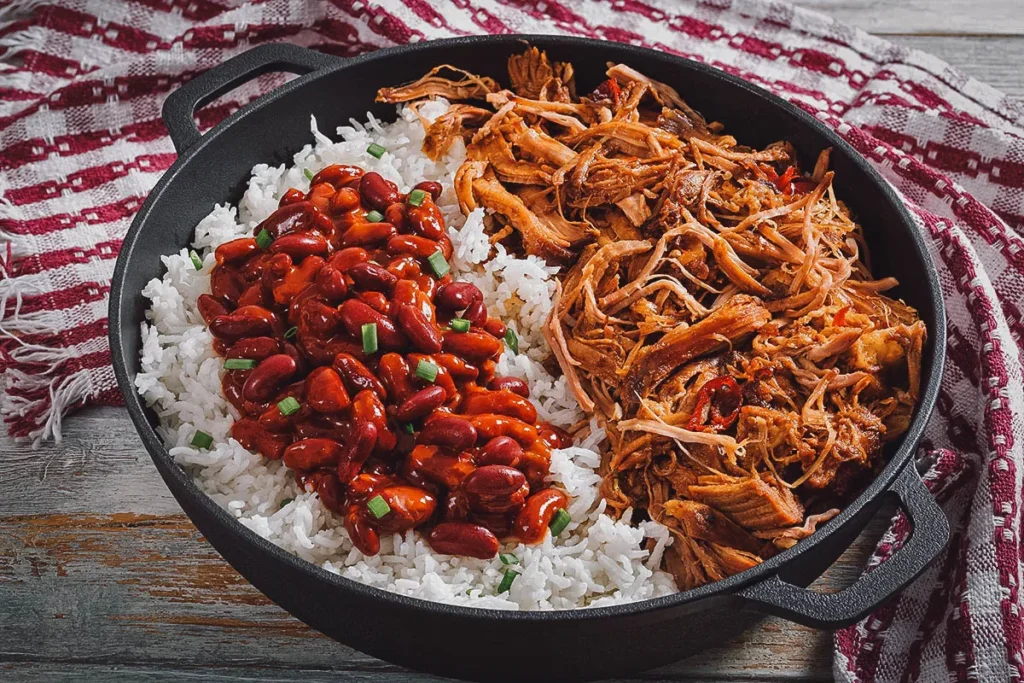
In the heart of the Caribbean, where the sun-kissed beaches meet lush landscapes, lies the Dominican Republic—a treasure trove of vibrant culture and, of course, delectable culinary traditions. This chapter delves into the rich tapestry of flavors, textures, and history that make Dominican cuisine an irresistible journey for both locals and visitors alike.
The Tapestry of Dominican Gastronomy
The culinary landscape of the Dominican Republic is a testament to its diverse heritage. Influences from Taino natives, Spanish colonizers, African slaves, and even Middle Eastern settlers have woven a culinary tapestry that dances on the taste buds.
A Dance of Flavors: Key Ingredients
Plantains: The Versatile Staple
At the heart of many Dominican dishes, plantains take center stage. Whether fried, mashed (mangu), or baked, these starchy wonders add a sweet, savory kick to every plate.
La Bandera: The Flag on Your Plate
“La Bandera,” translating to “The Flag,” is the quintessential Dominican meal. A harmonious combination of rice, beans, and meat, it represents the vibrant colors of the national flag.
Mofongo: A Culinary Masterpiece
Mofongo, a dish borrowed from Puerto Rico, has found a cherished home in Dominican kitchens. Mashed plantains, garlic, and pork cracklings fuse into a savory mound that’s as comforting as it is flavorful.
Street Food Extravaganza
Venture into the bustling streets, and you’ll discover an array of street foods that define Dominican casual dining. From the irresistible aroma of chimichurris grilling to the rhythmic pounding of mofongo in mortar and pestle, the streets are alive with the soul of Dominican culinary artistry.
The Sweet Serenade: Dominican Desserts
Dominican desserts are a celebration of sweetness. Sample the majarete, a coconut-infused custard, or indulge in the tres leches cake—a heavenly concoction of three milks that melts in your mouth.
The Mami Legacy: Home-cooked Comfort
Dominican cuisine isn’t just about the recipes; it’s about the warmth of the kitchens, the laughter around the dining table, and the love infused into every dish by generations of abuelas (grandmothers) and madres (mothers).
References
- Ortega, J., & Gutierrez, R. (2018). “Dominican Cooking: 101 Buen Provecho.” Skyhorse Publishing.
- Dominican Republic Ministry of Tourism
- Traditional Dominican Food Recipes
Exploring The Dominican Republic’s Ingredients
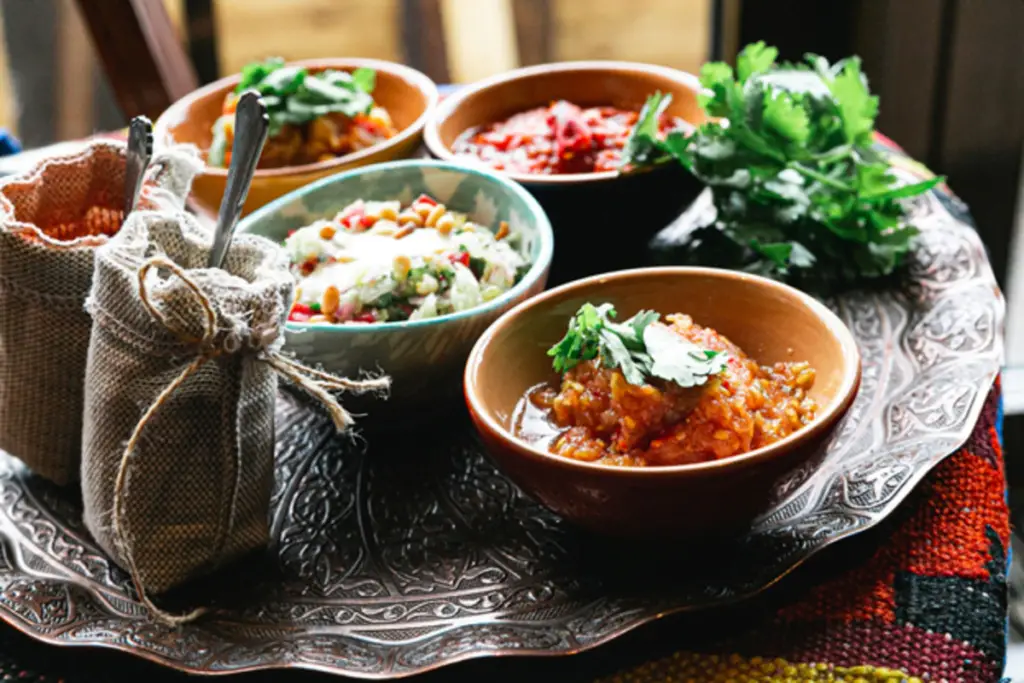
This chapter explores the vibrant palette of flavors, aromas, and textures that create the symphony of Dominican dishes.
Plantains: The Beloved Companions
Plantains, a close relative of the banana, are the culinary heartbeat of Dominican kitchens. These versatile fruits find their way into almost every meal, from the savory Mangu to the sweet Tostones, showcasing the Dominican love affair with plantains.
Yuca: The Starchy Delight
Yuca, or cassava, is a root vegetable that graces Dominican tables in various forms. Whether boiled, mashed, or fried, yuca adds a hearty element to Dominican meals, offering a subtle nutty flavor and a satisfying texture.
Mangú: The Breakfast Essential
Mangú, a breakfast staple, is a dish born from mashed green plantains. Accompanied by pickled red onions, Dominican salami, and fried cheese, it embodies a perfect fusion of textures and flavors to kickstart your day.
Red Beans: The Soulful Heartbeat
In the Dominican Republic, red beans are more than just an ingredient; they are the soul of La Bandera—the country’s beloved rice, beans, and meat dish. Cooked to perfection, they bring a warm, comforting richness to every plate.
Fresh Seafood: Gifts from the Caribbean
The surrounding azure waters provide the Dominican Republic with an abundance of fresh seafood. From succulent shrimp to flaky mahi-mahi, the coastal regions celebrate the ocean’s offerings with dishes like seafood mangu and delectable coconut-infused ceviche.
Sofrito: The Flavor Maestro
Sofrito, a blend of onions, peppers, garlic, tomatoes, and cilantro, is the aromatic backbone of Dominican cuisine. It adds depth and complexity to countless dishes, infusing each bite with a burst of savory goodness.
Tropical Fruits: Nature’s Candy
From the juicy mangoes and pineapples to the exotic soursop and passionfruit, Dominican Republic’s tropical fruits elevate both savory and sweet dishes, bringing a burst of sunshine to the table.
Dominican Coffee: Liquid Gold
No culinary journey in the Dominican Republic is complete without a sip of its renowned coffee. Grown in the fertile highlands, Dominican coffee is celebrated for its bold flavor and aromatic richness, making it the perfect ending to any meal.
Mastering The Dominican Republic Cuisine Cooking Techniques

Join us as we unravel the secrets behind the delicious tapestry of Dominican cooking.
Sofrito Mastery
Sofrito, the aromatic base of many Dominican dishes, is an art form in itself. The technique involves finely chopping onions, peppers, garlic, tomatoes, and cilantro. This fragrant medley is sautéed until it forms a flavor-packed foundation for stews, rice dishes, and more.
Mangu Mashing
Creating the perfect Mangu requires the skillful mashing of green plantains. Boiled until tender, the plantains are then mashed until smooth. This technique transforms a humble ingredient into a silky, savory breakfast delight, often served with pickled onions, Dominican salami, and fried cheese.
La Bandera’s Culinary Choreography
La Bandera, the Dominican Republic’s national dish, is a choreography of techniques. From braising meats to simmering rice and beans, each component requires meticulous attention. The result is a harmonious plate of rice, beans, meat, and salad—a culinary masterpiece.
Ceviche Sensation
In the coastal regions, the art of making ceviche shines. Fresh seafood is marinated in a citrusy blend of lime or bitter orange juice, onions, peppers, and cilantro. The technique allows the acidity to “cook” the seafood, resulting in a refreshing and flavorful dish.
Al Vapor Magic
Steaming, known as “al vapor,” is a favored technique for various dishes, including tamales and pastelón. This gentle cooking method preserves the natural flavors and nutrients of ingredients, creating tender and moist final products.
Sancocho Slow Dance
Sancocho, a hearty stew, involves a slow dance of flavors. Meats, tubers, and vegetables are simmered together, allowing each ingredient to impart its essence to the broth. This slow-cooking technique results in a rich and comforting dish.
Mamajuana Brewing
Mamajuana, a traditional Dominican herbal drink, involves the art of brewing. A blend of rum, red wine, and honey-soaked in a medley of herbs and tree barks creates a unique elixir. The longer it brews, the more complex the flavors become.
Coffee Roasting Ritual
Dominican coffee, celebrated worldwide, undergoes a meticulous roasting process. The green beans are carefully roasted to perfection, capturing the essence of the country’s fertile highlands. This technique ensures a bold and aromatic cup of liquid gold.
Traditional Dominican Republic Food

From savory stews to sweet delights, these five traditional dishes encapsulate the essence of Dominican cuisine.
Traditional Dominican Republic Food – Mangu: Breakfast Elegance
Start your day with Mangu, the Dominican Republic’s breakfast masterpiece. Mangu is a comforting dish made by boiling green plantains until tender, then mashing them to a smooth consistency.
Often accompanied by pickled onions, Dominican salami, and fried cheese, Mangu is a savory and hearty way to kickstart your morning.
La Bandera: The National Pride
No exploration of Dominican cuisine is complete without indulging in La Bandera, the national dish. This culinary triumvirate consists of rice, beans, and meat, often served with a side of salad.
The combination of these elements creates a plate that not only satisfies the palate but also embodies the spirit of Dominican pride and tradition.
Traditional Dominican Republic Food – Sancocho: Hearty Comfort in a Bowl
Sancocho, a robust stew, is a symbol of Dominican warmth and hospitality. This dish features a medley of meats, tubers, and vegetables simmered to perfection.
The slow-cooking process allows each ingredient to infuse the broth with its unique essence, resulting in a hearty and comforting meal.
Moro de Guandules: Rice with Pigeon Peas
Moro de Guandules is a savory rice dish that showcases the Dominican Republic’s love affair with rice and beans. This flavorful combination features rice cooked with pigeon peas, creating a side dish that perfectly complements a variety of main courses.
The aromatic blend of spices adds an extra layer of complexity to this staple.
Traditional Dominican Republic Food – Pastelón: Sweet and Savory Layers
Indulge in the layers of flavor found in Pastelón, a Dominican take on lasagna. This casserole features sweet plantains layered with savory ground beef, cheese, and a medley of spices.
Baked to golden perfection, Pastelón is a delightful harmony of sweet and savory notes, making it a cherished dish during festive occasions.
Exploring The Dominican Republic Street Food

Step into the vibrant streets of the Dominican Republic, where the tantalizing aromas of street food beckon every passerby.
In this chapter, we embark on a culinary journey through the lively streets and delve into five common recipes that have become beloved fixtures of the Dominican street food scene.
The Street Food Tapestry
The streets of the Dominican Republic come alive with the sizzle of grills and the enticing scents of traditional street fare.
Whether you’re strolling through the bustling markets of Santo Domingo or exploring the coastal vendors, the country’s street food scene is a lively celebration of local flavors and culinary innovation.
Mangúitos – Fried Plantain Sticks
Mangúitos are a ubiquitous street snack that captures the essence of Dominican gastronomy. Green plantains are sliced into thin sticks, deep-fried until golden and crispy, and served with a sprinkle of salt. It’s a delightful blend of crunch and sweetness, perfect for munching on the go.
Chicharrón – Crispy Pork Goodness
Dominican street corners echo with the sizzle of Chicharrón, enticing food lovers with its irresistible aroma. These crispy pork rinds are fried to perfection, creating a crunchy exterior that gives way to a flavorful and succulent center. Served with a side of yuca or tostones, Chicharrón is a street food classic.
Yaniqueques – Dominican Johnny Cakes
Yaniqueques are flatbreads that have become a staple of Dominican street food culture. These crispy, golden discs are made from a simple dough of flour, water, and salt, then deep-fried until they achieve the perfect level of crispiness. Often paired with fried fish or a dollop of avocado, Yaniqueques are a beloved snack.
Arepa – A Taste of Venezuela in the Dominican Streets
Influences from across the Caribbean converge in the Dominican street food scene, and the Arepa is a testament to this fusion. Originating from Venezuela, these cornmeal patties are stuffed with an array of savory fillings, such as shredded beef, cheese, and avocado, creating a portable feast for those on the move.
Empanadas – Handheld Pockets of Flavor
No exploration of Dominican street food is complete without savoring the goodness of Empanadas. These savory turnovers are filled with a variety of ingredients, from seasoned meats to spiced vegetables, encased in a golden, flaky crust. Empanadas offer a convenient and delicious option for those exploring the streets.
The Most Popular the Dominican Republic Recipes

Let’s tantalize your taste buds with 10 of the most popular Dominican Republic recipes:
Sancocho
This hearty stew is a national treasure. Imagine a flavorful broth simmering with tender meats (chicken, beef, pork), vegetables like plantains, yuca (cassava), and red kidney beans.
Every Dominican household has its own unique sancocho recipe, making it a dish that embodies warmth, comfort, and tradition.
Mangu
Plantains are a staple in Dominican cuisine, and mangú is a delightful way to enjoy them. These green plantains are boiled and mashed until creamy, seasoned with a touch of butter or olive oil.
Mangu is typically served for breakfast alongside fried eggs, salami, or cheese, offering a satisfying and flavorful start to the day.
Lochio
This flavorful stew is a Dominican take on a classic dish. Imagine tender stewed Dominican flag beans (red kidney beans) with chunks of meat (often chicken or beef), seasoned with a vibrant blend of Dominican spices like oregano, cumin, and adobo.
Lochio is a versatile dish, enjoyed for lunch or dinner, often paired with white rice and a side salad.
Pescado con Coco (Fish in Coconut Sauce)
Seafood lovers, rejoice! This dish features fresh fish cooked in a creamy coconut sauce infused with vibrant Dominican spices like achiote (annatto seeds) and peppers. The result is a flavorful and aromatic dish that perfectly captures the essence of Caribbean cuisine.
Tostones
Craving something crispy and delicious? Look no further than tostones. These green plantains are twice fried, creating a delightful contrast between the crispy exterior and the soft, pillowy interior.
Tostones are a versatile side dish, enjoyed with dips like guacamole or simply sprinkled with a touch of salt.
Habichuelas con Dulce (Sweet Cream of Beans)
Don’t let the name fool you! This dessert is a delightful surprise. Creamy red beans are slowly simmered with milk, sugar, and spices like cinnamon and nutmeg, creating a smooth and flavorful pudding.
Habichuelas con Dulce is a quintessential Dominican dessert, a sweet and satisfying end to any meal.
Bizcocho Dominicano (Dominican Cake)
This traditional cake is a crowd-pleaser. Imagine a moist and slightly crumbly cake flavored with rum and spices like nutmeg and cloves.
Often studded with raisins or candied fruit, Bizcocho Dominicano is perfect for a special occasion or a simple afternoon snack.
Pastelón
This savory dish is like a Caribbean shepherd’s pie. Layers of mashed green plantains alternate with a flavorful ground meat filling, seasoned with Dominican spices and aromatics. Pastelón is then baked until golden brown, creating a comforting and satisfying dish.
Arroz con Pollo (Dominican Rice with Chicken)
A Dominican twist on a classic, this dish combines tender, flavorful chicken with fluffy white rice cooked in a savory broth. Peppers, onions, and Dominican spices add depth of flavor, making Arroz con Pollo a perfect one-pot meal.
Mofongo
Calling all garlic lovers! Mofongo is a garlicky delight. Mashed green plantains are seasoned with loads of garlic and fried until golden brown. Mofongo can be served alongside various toppings like chicharrón (fried pork rinds), shrimp, or a creamy Dominican salad, offering a flavorful and satisfying experience.
What are the Health Implications of the Dominican Republic cuisine?
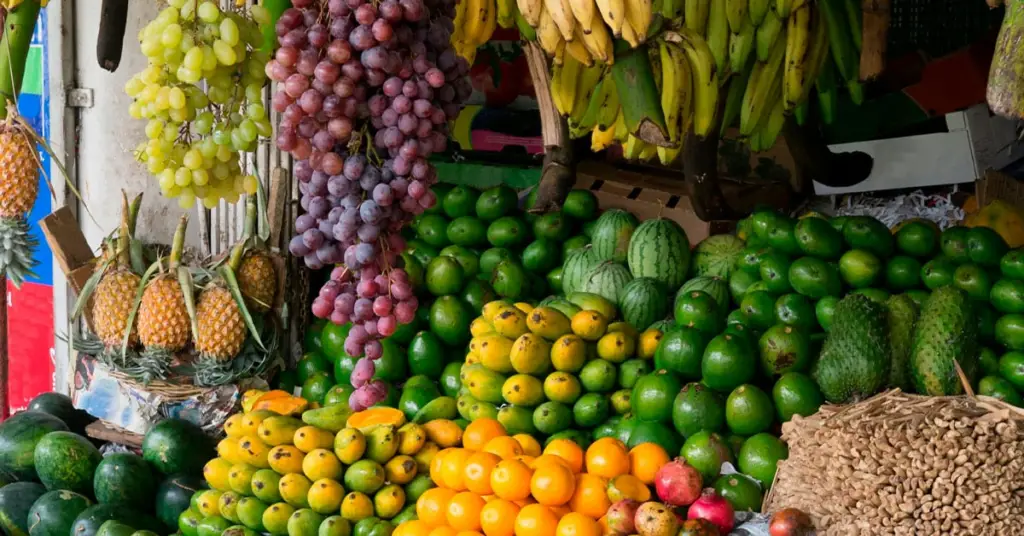
The captivating flavors of the Dominican Republic cuisine come with a tapestry of ingredients that, while rich in taste, can have varying health implications. The core elements of Dominican dishes, such as rice, beans, and tropical fruits, provide essential nutrients.
However, the frequent use of frying techniques and the inclusion of meats in stews can contribute to higher saturated fat intake. The reliance on carbohydrates, while a staple, may pose challenges for those monitoring their carbohydrate intake.
On the positive side, the abundant use of fresh produce, seafood, and lean meats in certain dishes, like Pescado con Coco, provides a balance of protein and vital nutrients. The inclusion of aromatic herbs and spices adds depth to the cuisine, offering potential health benefits.
As with any cuisine, moderation is key, and embracing the variety of offerings in Dominican food while being mindful of portion sizes contributes to a holistic and health-conscious dining experience.
Dominican Republic National Dish
The Dominican Republic is renowned for its vibrant culture and rich culinary heritage.
One cannot discuss Dominican cuisine without mentioning the country’s two national dishes.
Dominican Republic National Dish Sancocho No 1

This hearty stew is a staple in the Dominican diet and is enjoyed by locals and visitors alike. Made with a variety of meats, including beef, chicken, and pork, sancocho is typically accompanied by a medley of root vegetables such as yucca, plantains, and potatoes.
This comforting dish is simmered for hours, allowing the flavors to meld together and create a savory and delicious meal that perfectly represents the flavors of the Dominican Republic.
Dominican Republic National Dish La Bandera Dominicana No2

The culinary masterpiece that proudly holds the title of the Dominican Republic’s national dish is “La Bandera Dominicana,” meaning “The Flag.” True to its name, this dish is a representation of the national flag’s colors through a harmonious combination of rice, beans, and meat.
The dish typically consists of white rice served alongside red kidney beans and a savory meat stew, which can feature chicken, beef, or pork. The vibrant medley of colors mirrors the blue, white, and red hues of the national flag.
The combination of ingredients not only symbolizes national pride but also creates a satisfying and flavorful meal that captures the essence of Dominican cuisine.
Often accompanied by fresh cilantro and a side of Morir Soñando, a creamy orange and milk drink, La Bandera Dominicana is a cultural emblem served on dinner tables across the country, celebrating both culinary artistry and national identity.
Dominican Republic Cuisine Recipes you can try at Home
Craving a taste of the Dominican Republic without booking a flight? Look no further! Here, we delve into the world of Dominican cuisine, offering a delicious selection of recipes you can recreate in your own kitchen.
From the iconic sancocho stew to the creamy sweetness of habichuelas con dulce, get ready to embark on a culinary adventure and bring the vibrant flavors of the Dominican Republic right to your table.
Traditional Dominican Republic Food – Mangu (Breakfast Elegance)

History and Background
Mangu, a staple of Dominican cuisine, has deep roots in the country’s rich culinary history. Originating from African and Taino influences, this dish became a symbol of the Dominican Republic’s cultural identity.
Mangu is crafted from green plantains, a versatile ingredient that thrives in the tropical climate of the Caribbean. Traditionally a breakfast dish, Mangu has evolved into an everyday delight, enjoyed throughout the day and across the diverse regions of the Dominican Republic.
Traditional Dominican Republic Food – Mangu Ingredients:
- 4 green plantains
- 1 tablespoon salt
- 1 cup of water
- 4 tablespoons of butter (optional)
- 1 red onion (sliced, for garnish)
- Queso de Freír (fried cheese, for serving)
Traditional Dominican Republic Food – Recipe
1. Peel and Slice the Plantains:
- Start by peeling the green plantains and cutting them into equal-sized pieces.
2. Boil the Plantains:
- In a large pot, bring water to a boil and add the plantain pieces along with a tablespoon of salt.
- Boil until the plantains are tender, which usually takes around 10-15 minutes.
3. Mash and Mix:
- Drain the boiled plantains and place them in a large bowl.
- Begin mashing the plantains until they achieve a smooth consistency.
- For extra flavor, add butter and continue to mix until well combined.
4. Serve and Garnish:
- Mold the mashed plantains into serving portions on individual plates.
- Top each portion with slices of queso de freír (fried cheese) for an authentic touch.
- Garnish with thinly sliced red onions for added flavor and color.
5. Enjoy Your Mangu:
- Mangu is traditionally served as a side dish with fried eggs, salami, and cheese.
- Embrace the Dominican breakfast experience by pairing it with a cup of hot chocolate or coffee.
Servings: This recipe serves 4 people.
Cooking Time: Approximately 20-25 minutes.
Nutritional Information (per serving):
- Calories: 250 kcal
- Carbohydrates: 60g
- Protein: 2g
- Fat: 1g
- Fiber: 3g
Now, bring a taste of the Dominican Republic to your home with this simple yet hearty Mangu recipe. The combination of mashed plantains, cheese, and onions creates a dish that not only satisfies your taste buds but also connects you to the rich cultural tapestry of the Dominican Republic.
Enjoy this flavorful journey into the heart of Dominican cuisine!
Traditional Dominican Republic Food – Moro De Guandules (Rice with Pigeon Peas)

Exploring Dominican Flavors: Moro De Guandules
Embarking on a culinary journey through the vibrant streets of the Dominican Republic, I stumbled upon the rich tapestry of flavors that define its traditional cuisine. One dish that truly encapsulates the essence of Dominican gastronomy is Moro De Guandules, a savory rice dish featuring the beloved pigeon peas.
This Dominican delicacy holds a special place in the hearts and homes of locals, symbolizing the warmth of family gatherings and the unity found around the dinner table.
History and Background
Moro De Guandules has deep roots in the Dominican Republic, reflecting the amalgamation of indigenous Taino, African, and Spanish culinary influences. Pigeon peas, or guandules in Spanish, were introduced by the African diaspora and have since become a staple ingredient in Dominican kitchens.
The dish is a testament to the cultural diversity that has shaped the Dominican Republic, offering a delicious glimpse into the nation’s heritage.
Traditional Dominican Republic Food – Moro De Guandules Ingredients
- 2 cups long-grain rice
- 1 cup pigeon peas (canned or soaked overnight)
- 1/2 cup diced bacon
- 1/2 cup chopped cilantro
- 1/4 cup chopped bell pepper
- 1/4 cup chopped red onion
- 3 cloves garlic, minced
- 2 tablespoons tomato paste
- 1 tablespoon vegetable oil
- 4 cups chicken broth
- 1 teaspoon ground cumin
- 1 teaspoon dried oregano
- Salt and pepper to taste
Traditional Dominican Republic Food – Moro De Guandules Recipe
1. Prepare Ingredients
- Rinse the rice under cold water until the water runs clear.
- If using dried pigeon peas, soak them overnight and then boil until tender. If using canned, drain and rinse thoroughly.
- Chop bacon, cilantro, bell pepper, red onion, and garlic.
2. Sauté Aromatics
- In a large pot, heat vegetable oil over medium heat.
- Add diced bacon and sauté until golden brown.
- Stir in chopped onion, bell pepper, and garlic. Cook until vegetables are softened.
3. Add Rice and Pigeon Peas
- Stir in rice and pigeon peas, coating them with the aromatic mixture.
- Add tomato paste, cumin, oregano, salt, and pepper. Mix well.
4. Cook the Moro
- Pour in the chicken broth and bring the mixture to a boil.
- Reduce heat to low, cover, and simmer for 20-25 minutes or until rice is tender and has absorbed the liquid.
- Stir in chopped cilantro and fluff the moro with a fork.
5. Serve and Enjoy
- Serve Moro De Guandules hot, as a flavorful side or a hearty main course.
Serving Information
- Serves: 4-6 people
- Estimated Cooking Time: 40 minutes
- Nutritional Information (per serving):
- Calories: 320
- Protein: 10g
- Fat: 8g
- Carbohydrates: 55g
- Fiber: 4g
- Sugar: 2g
Traditional Dominican Republic Food – Pastelón (Sweet and Savory Layer)

Unveiling Dominican Delights: Pastelón
Delving into the heart of Dominican cuisine, I stumbled upon the soul-warming dish known as Pastelón. Originating from the enchanting Caribbean region, Pastelón is a beloved comfort food that fuses Spanish and African influences.
This layered casserole of sweet plantains, flavorful ground meat, and melted cheese embodies the spirit of Dominican hospitality and culinary artistry.
History and Background
Pastelón traces its roots to the Dominican Republic, where it holds a cherished place on family tables during celebrations and gatherings. With a history intertwined with Spanish and African culinary traditions, Pastelón showcases the vibrant tapestry of flavors that define Dominican gastronomy.
The dish perfectly captures the essence of the Caribbean, blending sweet and savory notes to create a truly unforgettable experience.
Traditional Dominican Republic Food – Pastelón Ingredients
- 3 ripe plantains, peeled and sliced lengthwise
- 1 1/2 pounds ground beef or pork
- 1 onion, finely chopped
- 2 cloves garlic, minced
- 1 bell pepper, diced
- 1 can (8 oz) tomato sauce
- 1/2 cup green olives, sliced
- 1/2 cup raisins
- 1 teaspoon dried oregano
- 1 teaspoon ground cumin
- Salt and pepper to taste
- 2 cups shredded mozzarella cheese
- 2 tablespoons vegetable oil
- Fresh cilantro for garnish (optional)
Traditional Dominican Republic Food – Pastelón Recipe
1. Prepare Plantains
- Peel the plantains and slice them lengthwise into thin strips.
- Heat vegetable oil in a pan and fry the plantain slices until golden brown. Set aside.
2. Cook the Meat
- In the same pan, add more oil if needed and sauté chopped onions, garlic, and bell pepper until softened.
- Add ground meat and cook until browned.
- Stir in tomato sauce, olives, raisins, oregano, cumin, salt, and pepper. Simmer for 10 minutes.
3. Layer the Casserole
- Preheat the oven to 375°F (190°C).
- In a greased baking dish, arrange a layer of fried plantains at the bottom.
- Top with a layer of the meat mixture and sprinkle with shredded mozzarella.
- Repeat the layers until ingredients are used up, finishing with a layer of cheese on top.
4. Bake and Serve
- Bake the Pastelón for 25-30 minutes or until the cheese is melted and bubbly.
- Allow it to cool for a few minutes before slicing.
- Garnish with fresh cilantro if desired and serve warm.
Serving Information
- Serves: 6-8 people
- Estimated Cooking Time: 1 hour
- Nutritional Information (per serving):
- Calories: 450
- Protein: 20g
- Fat: 25g
- Carbohydrates: 40g
- Fiber: 4g
- Sugar: 18g
Dominican Republic Food – Lochio

Savoring Dominican Comfort: Lochio
Nestled within the heart of Dominican kitchens, Lochio stands as a comforting culinary masterpiece that draws inspiration from the lush landscapes of the Caribbean. Hailing from the vibrant and diverse Dominican Republic, this dish encapsulates the warmth of home-cooked meals shared among loved ones.
Lochio is a savory stew, highlighting the region’s rich culinary heritage with its bold flavors and aromatic spices.
History and Background
Lochio has its roots deeply embedded in Dominican traditions, reflecting the fusion of indigenous, African, and Spanish influences that shape the country’s culinary landscape. This hearty stew, often made with a medley of meats, root vegetables, and aromatic herbs, showcases the essence of Dominican comfort food.
It’s a dish that speaks volumes about the shared history and diverse cultural tapestry that defines the Dominican Republic.
Dominican Republic Food – Lochio Ingredients
- 1 pound beef stew meat, cubed
- 1/2 pound pork shoulder, diced
- 1/2 pound chicken, cut into pieces
- 2 tablespoons vegetable oil
- 1 large onion, finely chopped
- 3 cloves garlic, minced
- 1 bell pepper, diced
- 2 tomatoes, chopped
- 1 cup pumpkin, peeled and diced
- 1 cup yuca (cassava), peeled and diced
- 1 cup malanga, peeled and diced
- 1 cup plantains, peeled and sliced
- 1/4 cup tomato paste
- 1 teaspoon dried oregano
- 1 teaspoon ground cumin
- Salt and pepper to taste
- 6 cups water or beef/chicken broth
- Fresh cilantro for garnish
Dominican Republic Food – Lochio Recipe
1. Prepare the Meats
- In a large pot, heat vegetable oil over medium heat.
- Brown the beef, pork, and chicken until well-seared. Remove from the pot and set aside.
2. Sauté Aromatics
- In the same pot, sauté chopped onions, garlic, and bell pepper until softened.
- Stir in tomato paste, oregano, cumin, salt, and pepper. Cook for 2 minutes.
3. Add Vegetables and Meats
- Return the seared meats to the pot.
- Add chopped tomatoes, pumpkin, yuca, malanga, and plantains.
- Pour in water or broth and bring the mixture to a boil.
4. Simmer and Garnish
- Reduce heat to low, cover, and simmer for 1.5 to 2 hours or until meats are tender.
- Adjust seasoning as needed.
- Garnish with fresh cilantro before serving.
Serving Information
- Serves: 6-8 people
- Estimated Cooking Time: 2.5 hours
- Nutritional Information (per serving):
- Calories: 450
- Protein: 25g
- Fat: 15g
- Carbohydrates: 55g
- Fiber: 8g
- Sugar: 12g
Dominican Republic Food – Arroz Con Pollo (Dominican Rice with Chicken)

Embarking on a Flavorful Journey: Arroz Con Pollo
Our culinary adventure brings us to the enchanting Dominican Republic, where the vibrant and aromatic Arroz Con Pollo takes center stage. This beloved dish is a testament to the fusion of Spanish, African, and indigenous Taino influences that characterize Dominican cuisine.
Rooted in tradition, Arroz Con Pollo is more than just a meal; it’s a celebration of family, community, and the rich flavors that define the Caribbean region.
History and Background
Arroz Con Pollo has been a staple in Dominican households for generations, reflecting the diverse cultural heritage of the country. The dish’s roots can be traced back to the indigenous Taino people, who cultivated rice, and the Spanish colonizers who brought chicken to the island.
Over time, African culinary influences infused the dish with a unique blend of spices and techniques. Today, Arroz Con Pollo stands as a culinary ambassador, offering a taste of Dominican warmth and hospitality.
Dominican Republic Food – Arroz Con Pollo Ingredients
- 2 cups long-grain rice
- 1 whole chicken, cut into pieces
- 1/4 cup vegetable oil
- 1 onion, finely chopped
- 3 cloves garlic, minced
- 1 bell pepper, diced
- 2 tomatoes, chopped
- 1 cup green peas
- 1 cup carrots, diced
- 1 teaspoon ground cumin
- 1 teaspoon dried oregano
- 1 bay leaf
- Salt and pepper to taste
- 4 cups chicken broth
- Fresh cilantro for garnish
Dominican Republic Food – Arroz Con Pollo Recipe
1. Prepare Chicken and Rice
- Season chicken pieces with salt, pepper, cumin, and oregano.
- In a large pot, heat vegetable oil over medium heat. Brown the chicken on all sides, then remove and set aside.
- In the same pot, sauté chopped onions, garlic, and bell pepper until softened.
2. Add Vegetables and Rice
- Stir in chopped tomatoes, green peas, and diced carrots.
- Add rice to the pot, coating it with the flavorful mixture.
- Place the browned chicken back into the pot.
3. Season and Simmer
- Sprinkle cumin, oregano, and add the bay leaf.
- Pour in chicken broth, ensuring the rice is submerged.
- Bring the mixture to a boil, then reduce heat to low, cover, and simmer for 20-25 minutes or until rice is cooked and chicken is tender.
4. Serve and Garnish
- Remove the bay leaf and fluff the rice with a fork.
- Garnish with fresh cilantro before serving.
Serving Information
- Serves: 4-6 people
- Estimated Cooking Time: 40 minutes
- Nutritional Information (per serving):
- Calories: 400
- Protein: 20g
- Fat: 15g
- Carbohydrates: 50g
- Fiber: 5g
- Sugar: 5g
Dominican Republic Food – Mofongo

Savoring the Soul of the Dominican Republic: Mofongo Magic
Venturing into the heart of the Dominican Republic’s culinary landscape, we discover the irresistible allure of Mofongo. Originating from the vibrant Caribbean region, this dish is a flavorful celebration of plantains, garlic, and pork that resonates with the rich cultural tapestry of the Dominican Republic.
Mofongo tells a tale of indigenous Taino roots, African influences, and Spanish culinary traditions, all blended into a comforting and delicious masterpiece.
History and Background
Mofongo’s origins can be traced back to the Taino people, who cultivated plantains, and the African slaves who brought their unique culinary techniques to the Dominican Republic. The dish became a beloved comfort food, epitomizing the essence of Dominican hospitality.
Today, Mofongo is a symbol of cultural unity, featuring a perfect harmony of flavors that captivate the taste buds and tell the story of the island’s diverse history.
Dominican Republic Food – Mofongo Ingredients
- 4 ripe plantains, peeled and sliced
- 1/2 cup te
- 1/4 cup chicken broth (optional)
- Olive oil for drizzling
- Fresh cilantro for garnish
Dominican Republic Food – Mofongo Recipe
1. Fry Plantains
- In a deep fryer or large pan, heat oil over medium-high heat.
- Fry plantain slices until golden brown and crispy. Remove and drain excess oil on paper towels.
2. Sauté Garlic and Pork Fat
- In a separate pan, heat pork fat or bacon fat over medium heat.
- Add minced garlic and sauté until aromatic.
- Add pork cracklings (chicharrones) and cook until they become crispy.
3. Mash and Form Mofongo
- In a mortar or large bowl, mash fried plantains, garlic, and pork fat mixture.
- Season with salt and pepper to taste.
- If needed, add chicken broth gradually until you achieve a smooth and pliable consistency.
4. Shape and Serve
- Form the mashed plantain mixture into individual serving-sized balls or use a cup to shape them.
- Drizzle with olive oil and garnish with fresh cilantro.
Serving Information
- Serves: 4 people
- Estimated Cooking Time: 45 minutes
- Nutritional Information (per serving):
- Calories: 350
- Protein: 5g
- Fat: 20g
- Carbohydrates: 45g
- Fiber: 4g
- Sugar: 20g
Dominican Republic Food – Mangúitos

Discovering Dominican Crunch: Mangúitos Delight
Our culinary journey takes us to the heart of the Dominican Republic, where the delightful Mangúitos steal the spotlight. Originating from the Caribbean, this dish transforms simple plantains into crispy, golden delights.
A popular street food in the Dominican Republic, Mangúitos encapsulate the region’s vibrant flavors and culinary creativity. Let’s unravel the story of these fried plantain sticks and savor the essence of Dominican street food.
History and Background
Mangúitos have deep roots in Dominican street food culture, where vendors expertly slice, fry, and season plantains to create an irresistible snack. Plantains, a staple in the Caribbean, have been a part of Dominican cuisine since the Taino people cultivated them centuries ago.
Today, Mangúitos showcase the ingenuity of Dominican street vendors and their ability to turn humble ingredients into a crispy, addictive delight enjoyed by locals and visitors alike.
Dominican Republic Food – Mangúitos Ingredients
- 4 ripe plantains
- Vegetable oil for frying
- Salt to taste
- Optional toppings: ketchup, mayonnaise, or hot sauce
Dominican Republic Food – Mangúitos Recipe
1. Prepare Plantains
- Peel the ripe plantains and cut them into thin, uniform sticks.
2. Heat Oil
- In a deep fryer or a large pan, heat vegetable oil to 350°F (175°C).
3. Fry Plantains
- Carefully place plantain sticks into the hot oil, ensuring not to overcrowd the pan.
- Fry until the sticks are golden brown and crispy, approximately 3-4 minutes.
4. Season and Serve
- Remove the fried plantains and place them on paper towels to drain excess oil.
- Sprinkle with salt while still hot.
- Serve Mangúitos immediately with optional toppings like ketchup, mayonnaise, or hot sauce.
Serving Information
- Serves: 4 people
- Estimated Cooking Time: 15 minutes
- Nutritional Information (per serving, without toppings):
- Calories: 180
- Protein: 1g
- Fat: 8g
- Carbohydrates: 30g
- Fiber: 2g
- Sugar: 15g
Note: Nutritional information may vary based on oil absorption during frying and optional toppings.
Dominican Republic Food – Chicharrón (Crispy Pork Goodness)

Exploring Dominican Delicacies: Chicharrón Chronicles
Our culinary adventure leads us to the Dominican Republic, where the irresistible Chicharrón takes center stage. Originating from the lively streets and kitchens of the Caribbean, Chicharrón embodies the spirit of indulgence and bold flavors.
This crispy, savory dish has deep roots in Dominican culture, showcasing the art of transforming pork belly into a crunchy delight. Let’s delve into the history and flavors of this Dominican favorite.
History and Background
Chicharrón has been a culinary tradition in the Dominican Republic for centuries. With its roots in Spanish and indigenous Taino cultures, this dish gained popularity through the African influence on Caribbean cuisine.
Originally prepared as a method of preserving pork, Chicharrón evolved into a beloved snack enjoyed by Dominicans daily. Today, this crispy pork goodness remains an essential part of Dominican gastronomy, celebrated for its rich history and mouthwatering taste.
Dominican Republic Food – Chicharrón Ingredients
- 1 pound pork belly, skin-on, cut into bite-sized pieces
- 1 teaspoon salt
- 1 teaspoon black pepper
- 1 teaspoon garlic powder
- 1 teaspoon dried oregano
- 1 teaspoon ground cumin
- 1/2 cup vegetable oil (for frying)
- Lime wedges for serving
Dominican Republic Food – Chicharrón Recipe
1. Prepare Pork Belly
- Cut pork belly into bite-sized pieces, ensuring the skin is intact.
- Pat the pieces dry with paper towels.
2. Season Pork
- In a bowl, mix salt, black pepper, garlic powder, dried oregano, and ground cumin.
- Rub the seasoning mixture evenly over the pork pieces, including the skin.
3. Heat Oil
- In a deep fryer or a large, deep pan, heat vegetable oil to 350°F (175°C).
4. Fry Chicharrón
- Carefully place pork pieces in the hot oil, ensuring they are not crowded.
- Fry until the pork is golden brown and the skin is crispy, approximately 15-20 minutes.
5. Drain and Serve
- Remove Chicharrón from the oil and place on a paper towel to drain excess oil.
- Serve hot with lime wedges for squeezing over the crispy pieces.
Serving Information
- Serves: 4 people
- Estimated Cooking Time: 30 minutes
- Nutritional Information (per serving):
- Calories: 400
- Protein: 15g
- Fat: 35g
- Carbohydrates: 1g
- Fiber: 0g
- Sugar: 0g
Note: Nutritional information is approximate and may vary based on cooking methods and specific ingredients used.
Dominican Republic Food – Yaniqueques (Dominican Johnny Cakes)

Unveiling Dominican Street Eats: Yaniqueques Extravaganza
Our culinary escapade lands us in the heart of the Dominican Republic, where the delightful Yaniqueques, or Dominican Johnny Cakes, take center stage. Originating from the vibrant street food scene, these crispy, golden discs encapsulate the flavors of the Caribbean.
Yaniqueques are a popular snack enjoyed throughout the Dominican Republic, combining indigenous Taino roots with African and Spanish culinary influences. Let’s embark on a journey to uncover the history and savor the simplicity of making these beloved Dominican street eats.
History and Background
Yaniqueques trace their origins to the Taino people, who cultivated cassava, a starchy root vegetable. The African and Spanish influences introduced various cooking techniques, resulting in the creation of these delectable fried flatbreads.
Today, Yaniqueques are cherished for their crispy exterior and soft interior, offering a taste of Dominican street food culture that’s both nostalgic and irresistible.
Dominican Republic Food – Yaniqueques Ingredients
- 2 cups cassava flour
- 1 teaspoon baking powder
- 1 teaspoon salt
- 1 cup warm water
- Vegetable oil for frying
Dominican Republic Food – Yaniqueques Recipe
1. Prepare the Dough
- In a mixing bowl, combine cassava flour, baking powder, and salt.
- Gradually add warm water, mixing continuously until a smooth, elastic dough forms.
2. Divide and Shape
- Divide the dough into golf ball-sized portions.
- On a floured surface, flatten each portion into thin discs, about 6 inches in diameter.
3. Heat Oil
- In a deep fryer or a large, deep pan, heat vegetable oil to 350°F (175°C).
4. Fry Yaniqueques
- Carefully place each disc into the hot oil, frying until both sides are golden brown, approximately 2-3 minutes per side.
- Remove and place on paper towels to drain excess oil.
5. Serve and Enjoy
- Serve Yaniqueques warm, alone or paired with your favorite Dominican dipping sauce or cheese.
Serving Information
- Serves: 4 people
- Estimated Cooking Time: 30 minutes
- Nutritional Information (per serving, based on 2 yaniqueques):
- Calories: 200
- Protein: 1g
- Fat: 7g
- Carbohydrates: 35g
- Fiber: 2g
- Sugar: 0g
Note: Nutritional information is approximate and may vary based on specific ingredients and cooking methods.
Dominican Republic Food – Arepa (A Taste of Venezuela in the Dominican Streets)

Unwrapping Dominican Goodness: Arepa Delights
Embarking on a culinary journey through the Dominican Republic, our destination today is the beloved Arepa. While Arepas are typically associated with South American cuisines, the Dominican version boasts its own unique flair.
Originating from the diverse culinary tapestry of the Caribbean, Dominican Arepas are a testament to the fusion of indigenous, African, and Spanish influences. Let’s dive into the history, flavors, and the joy of crafting these delightful pockets of goodness.
History and Background
The Dominican Arepa has deep roots in the historical crossroads of the Dominican Republic. Originally an indigenous dish, it evolved over the years with the arrival of African and Spanish influences.
Today, Dominican Arepas are a cherished snack and meal, offering a taste of the country’s diverse cultural heritage. Whether enjoyed on the go or as a family meal, Arepas have become a symbol of Dominican culinary creativity.
Dominican Republic Food – Arepa Ingredients
- 2 cups pre-cooked yellow cornmeal (masarepa)
- 1 teaspoon salt
- 2 cups warm water
- 1 cup shredded queso blanco (white cheese)
- Vegetable oil for frying
Dominican Republic Food – Arepa Recipe
1. Prepare the Dough
- In a mixing bowl, combine pre-cooked yellow cornmeal (masarepa) and salt.
- Gradually add warm water, mixing until a soft, pliable dough forms.
2. Form Arepas
- Divide the dough into golf ball-sized portions.
- Flatten each ball into a round disc, about 1/2 inch thick.
3. Add Cheese
- Place a spoonful of shredded queso blanco in the center of each disc.
- Fold the edges of the dough over the cheese, forming a sealed pocket.
4. Fry Arepas
- In a large pan, heat vegetable oil over medium-high heat.
- Fry each Arepa until golden brown on both sides, approximately 3-4 minutes per side.
5. Serve and Enjoy
- Serve Arepas warm, either on their own or with your favorite Dominican dipping sauce.
Serving Information
- Serves: 4 people
- Estimated Cooking Time: 20 minutes
- Nutritional Information (per serving, based on 1 Arepa):
- Calories: 250
- Protein: 5g
- Fat: 10g
- Carbohydrates: 35g
- Fiber: 3g
- Sugar: 0g
Note: Nutritional information is approximate and may vary based on specific ingredients and variations in preparation.
Dominican Republic Food – Empanadas (Handheld Pockets of Flavor)

A Bite of Dominican Bliss: Embracing Empanadas
Diving into the heart of Dominican culinary traditions, we find ourselves captivated by the irresistible charm of Empanadas. Originating from the colorful and lively Caribbean region, Dominican Empanadas are a delicious testament to the fusion of indigenous Taino, African, and Spanish culinary influences.
These savory pockets of joy have become a symbol of comfort, creativity, and the warm hospitality that defines Dominican cuisine.
History and Background
Empanadas in the Dominican Republic have a fascinating history, with roots tracing back to the Taino people who first cultivated cassava. The Spanish introduced wheat flour, and African culinary traditions added a wealth of spices and fillings.
Over time, the Dominican Empanada evolved into a beloved dish enjoyed in homes, markets, and celebrations across the country. It’s a culinary journey that reflects the resilience and creativity of the Dominican people.
Dominican Republic Food – Empanadas Ingredients
- 2 cups all-purpose flour
- 1/2 cup butter, cold and diced
- 1/2 cup warm water
- 1/2 teaspoon salt
- 1 pound ground beef or shredded chicken
- 1 onion, finely chopped
- 2 cloves garlic, minced
- 1 bell pepper, diced
- 1 tomato, chopped
- 1/2 cup pitted green olives, sliced
- 1 teaspoon ground cumin
- 1 teaspoon dried oregano
- Salt and pepper to taste
- Vegetable oil for frying
Dominican Republic Food – Empanadas Recipe
1. Prepare the Dough
- In a large bowl, combine all-purpose flour, cold diced butter, warm water, and salt.
- Knead the dough until smooth, then cover and let it rest for 30 minutes.
2. Make the Filling
- In a pan, sauté chopped onions, garlic, and bell pepper until softened.
- Add ground beef or shredded chicken, cooking until browned.
- Stir in chopped tomatoes, sliced olives, cumin, oregano, salt, and pepper. Cook for an additional 5 minutes.
3. Shape and Fill Empanadas
- Preheat oven to 375°F (190°C).
- Roll out the dough and cut circles using a round cutter.
- Place a spoonful of the filling in the center of each circle.
- Fold the dough over, creating a half-moon shape, and press the edges to seal.
4. Fry or Bake
- In a deep fryer or large pan, heat vegetable oil to 350°F (175°C).
- Fry each Empanada until golden brown, approximately 3-4 minutes per side.
- Alternatively, bake in the preheated oven for 20-25 minutes or until golden.
5. Serve and Enjoy
- Serve Empanadas warm as a delightful snack or meal, perhaps with a side of Dominican hot sauce.
Serving Information
- Serves: 6 people
- Estimated Cooking Time: 1 hour
- Nutritional Information (per serving, based on 1 Empanada):
- Calories: 300
- Protein: 15g
- Fat: 20g
- Carbohydrates: 20g
- Fiber: 2g
- Sugar: 1g
Note: Nutritional information is approximate and may vary based on specific ingredients and variations in preparation.
Dominican Food – Bizcocho Dominicano (Dominican Cake)

Savoring Sweet Traditions: A Dive into Bizcocho Dominicano
Embarking on a delightful exploration of Dominican desserts, our spotlight today shines on the beloved Bizcocho Dominicano. Originating from the heart of the Caribbean, this sumptuous sponge cake embodies the sweet legacy of the Dominican Republic.
Rich in history and flavor, Bizcocho Dominicano is a testament to the country’s love affair with baking, blending indigenous, African, and Spanish influences into a delightful treat enjoyed by generations.
History and Background
Bizcocho Dominicano has its roots deeply embedded in Dominican celebrations and family gatherings. Originally influenced by Spanish and Taino baking traditions, this cake evolved over the years with the addition of new ingredients and techniques introduced by African influences.
Today, Bizcocho Dominicano stands tall as a symbol of joy and togetherness, often gracing tables during birthdays, weddings, and other festive occasions.
Dominican Food – Bizcocho Dominicano Ingredients
- 2 cups all-purpose flour
- 1 cup granulated sugar
- 1 cup unsalted butter, softened
- 4 large eggs
- 1 cup whole milk
- 1 tablespoon baking powder
- 1 teaspoon vanilla extract
- Zest of 1 orange
- Pinch of salt
Dominican Food – Bizcocho Dominicano Recipe
1. Prepare the Batter
- Preheat the oven to 350°F (175°C) and grease a round cake pan.
- In a bowl, cream together softened butter and sugar until light and fluffy.
- Add eggs one at a time, beating well after each addition.
- In a separate bowl, whisk together flour, baking powder, and salt.
2. Mix and Flavor
- Gradually add the dry ingredients to the wet ingredients, alternating with the whole milk.
- Stir in vanilla extract and orange zest, combining until the batter is smooth.
3. Bake
- Pour the batter into the prepared cake pan and smooth the top.
- Bake for approximately 30-35 minutes or until a toothpick inserted into the center comes out clean.
4. Cool and Serve
- Allow the Bizcocho to cool in the pan for 10 minutes before transferring it to a wire rack to cool completely.
- Once cooled, slice and serve with a dusting of powdered sugar or a dollop of whipped cream.
Serving Information
- Serves: 8 people
- Estimated Cooking Time: 35 minutes
- Nutritional Information (per serving):
- Calories: 400
- Protein: 6g
- Fat: 20g
- Carbohydrates: 50g
- Fiber: 1g
- Sugar: 25g
Note: Nutritional information is approximate and may vary based on specific ingredients and variations in preparation.
Dominican Food – Pastelón

Exploring Dominican Comfort: Pastelón Passion
Embarking on a flavorful journey into Dominican kitchens, our spotlight today is on the beloved Pastelón. This hearty and comforting dish hails from the Dominican Republic, showcasing the diverse and delicious flavors that characterize Caribbean cuisine. Pastelón is more than just a meal; it’s a culinary love letter, weaving together indigenous, African, and Spanish influences into a layered masterpiece. Join me as we dive into the history, ingredients, a
nd the art of crafting this Dominican delight.
History and Background
Pastelón’s roots can be traced back to the indigenous Taino people who cultivated plantains, which were later embraced and transformed by the African and Spanish influences in the Dominican Republic.
Over time, this layered casserole has become a staple at family gatherings, celebrations, and cherished Sunday dinners. It’s a testament to the rich culinary history of the region, offering a warm and comforting taste of Dominican hospitality.
Dominican Food – Pastelón Ingredients
- 3 ripe plantains, peeled and sliced
- 1 1/2 pounds ground beef
- 1 onion, finely chopped
- 2 bell peppers (1 red, 1 green), diced
- 3 cloves garlic, minced
- 1 can (8 ounces) tomato sauce
- 1 teaspoon dried oregano
- 1 teaspoon ground cumin
- Salt and pepper to taste
- 2 cups shredded mozzarella cheese
- 3 large eggs
- 1/2 cup whole milk
- Olive oil for greasing the baking dish
Dominican Food – Pastelón Recipe
1. Prepare the Plantains
- Preheat the oven to 375°F (190°C).
- Peel and slice the ripe plantains lengthwise, about 1/4 inch thick.
2. Brown the Ground Beef
- In a skillet, brown the ground beef over medium heat.
- Add chopped onions, diced bell peppers, and minced garlic. Cook until vegetables are softened.
3. Season and Layer
- Season the beef mixture with oregano, ground cumin, salt, and pepper.
- In a greased baking dish, layer half of the plantains, followed by the beef mixture. Repeat with the remaining plantains and beef.
4. Add Cheese
- Sprinkle shredded mozzarella cheese evenly over the top layer.
5. Whisk Eggs and Milk
- In a bowl, whisk together eggs and milk.
- Pour the egg mixture over the layered Pastelón.
6. Bake
- Bake in the preheated oven for 25-30 minutes or until the top is golden and the eggs are set.
7. Serve and Enjoy
- Allow the Pastelón to cool for a few minutes before slicing.
- Serve warm, savoring the layers of plantains, seasoned beef, and gooey cheese.
Serving Information
- Serves: 6 people
- Estimated Cooking Time: 1 hour
- Nutritional Information (per serving):
- Calories: 450
- Protein: 25g
- Fat: 20g
- Carbohydrates: 35g
- Fiber: 4g
- Sugar: 18g
Note: Nutritional information is approximate and may vary based on specific ingredients and variations in preparation.
Dominican Food – Pastelón De Arroz (Cheesy Beef and Rice Casserole)

Exploring Dominican Fusion: Pastelón de Arroz Delight
Embarking on a culinary exploration through the Dominican Republic, our spotlight today is on the unique and flavorful Pastelón de Arroz. Originating from the vibrant Caribbean region, this dish is a delicious fusion of Dominican and Spanish influences.
Pastelón de Arroz showcases the creative spirit of Dominican cuisine, blending rice, meat, and spices into a layered delight that has become a beloved comfort food. Let’s uncover the history, dive into the ingredients, and savor the steps of creating this Dominican fusion masterpiece.
History and Background
Pastelón de Arroz has its roots in the Dominican Republic, where it emerged as a delightful variation of traditional Pastelón. This dish reflects the intersection of indigenous Taino, African, and Spanish culinary influences that define Dominican gastronomy.
With rice as its base, Pastelón de Arroz embodies the fusion of cultures that have shaped the region’s rich culinary tapestry.
Dominican Food – Pastelón De Arroz Ingredients
- 2 cups cooked white rice
- 1 pound ground beef or turkey
- 1 onion, finely chopped
- 2 bell peppers (1 red, 1 green), diced
- 3 cloves garlic, minced
- 1 can (8 ounces) tomato sauce
- 1 teaspoon dried oregano
- 1 teaspoon ground cumin
- Salt and pepper to taste
- 2 cups shredded mozzarella cheese
- 3 large eggs
- 1/2 cup whole milk
- Olive oil for greasing the baking dish
Dominican Food – Pastelón De Arroz Recipe
1. Cook Rice
- Prepare 2 cups of cooked white rice.
2. Brown the Meat
- In a skillet, brown the ground beef or turkey over medium heat.
- Add chopped onions, diced bell peppers, and minced garlic. Cook until vegetables are softened.
3. Season and Mix
- Season the meat mixture with oregano, ground cumin, salt, and pepper.
- Stir in the tomato sauce and cooked rice, mixing until well combined.
4. Layer in the Baking Dish
- Grease a baking dish with olive oil.
- Layer half of the rice and meat mixture into the baking dish.
5. Add Cheese
- Sprinkle shredded mozzarella cheese evenly over the rice and meat layer.
6. Repeat Layers
- Repeat the layers with the remaining rice and meat mixture.
7. Whisk Eggs and Milk
- In a bowl, whisk together eggs and milk.
- Pour the egg mixture over the layered Pastelón de Arroz.
8. Bake
- Bake in a preheated oven at 375°F (190°C) for 30-35 minutes or until the top is golden and the eggs are set.
9. Serve and Enjoy
- Allow the Pastelón de Arroz to cool for a few minutes before slicing.
- Serve warm, savoring the layers of rice, seasoned meat, and melted cheese.
Serving Information
- Serves: 6 people
- Estimated Cooking Time: 1 hour
- Nutritional Information (per serving):
- Calories: 420
- Protein: 22g
- Fat: 18g
- Carbohydrates: 40g
- Fiber: 2g
- Sugar: 4g
Note: Nutritional information is approximate and may vary based on specific ingredients and variations in preparation.
Dominican Food – Canoas De Plátano Maduro (Meatless Ripe Plantain Boats)

Embracing Dominican Delicacy: Canoas de Plátano Maduro
Embarking on a culinary journey through the Dominican Republic, we encounter the delightful Canoas de Plátano Maduro, a dish that celebrates the sweet plantains abundant in the region. Originating from the heart of the Caribbean,
Canoas de Plátano Maduro is a savory and satisfying creation that exemplifies the fusion of indigenous, African, and Spanish culinary influences. Join me in exploring the history, ingredients, and steps to craft this Dominican delight that graces tables with its unique flavors and cultural significance.
History and Background
Canoas de Plátano Maduro, translated as “Canoe of Ripe Plantains,” has deep roots in Dominican culture. The dish’s name pays homage to the elongated shape of the ripe plantain, resembling a canoe.
With a history influenced by Taino agriculture, African culinary techniques, and Spanish flavors, Canoas de Plátano Maduro has evolved into a beloved Dominican comfort food, capturing the essence of the vibrant Caribbean cuisine.
Dominican Food – Canoas De Plátano Maduro Ingredients
- 4 ripe plantains
- 1 cup ground beef or turkey
- 1 onion, finely chopped
- 1 bell pepper, diced
- 2 cloves garlic, minced
- 1 cup tomato sauce
- 1 teaspoon ground cumin
- 1 teaspoon dried oregano
- Salt and pepper to taste
- 1 cup shredded mozzarella cheese
- Vegetable oil for frying
Dominican Food – Canoas De Plátano Maduro Recipe
1. Peel and Prepare Plantains
- Peel the ripe plantains and cut them in half lengthwise, creating boat-like shapes.
2. Hollow Out Plantains
- Hollow out the center of each plantain half, creating a canoe shape. Reserve the removed plantain for later.
3. Cook the Filling
- In a skillet, brown the ground beef or turkey over medium heat.
- Add chopped onions, diced bell peppers, and minced garlic. Cook until vegetables are softened.
- Stir in tomato sauce, ground cumin, dried oregano, salt, and pepper. Cook until the mixture thickens.
4. Stuff Plantains
- Fill the hollowed plantains with the cooked meat mixture.
5. Replace Plantain Lid
- Place the reserved piece of plantain on top, closing the “canoe.”
6. Fry Canoas
- In a pan, heat vegetable oil over medium-high heat.
- Fry the Canoas until golden brown on both sides, approximately 4-5 minutes per side.
7. Add Cheese and Serve
- Sprinkle shredded mozzarella cheese on top of the Canoas during the last minute of frying.
- Serve hot, allowing the cheese to melt and form a delicious topping.
Serving Information
- Serves: 4 people
- Estimated Cooking Time: 30 minutes
- Nutritional Information (per serving):
- Calories: 380
- Protein: 15g
- Fat: 15g
- Carbohydrates: 50g
- Fiber: 5g
- Sugar: 20g
Note: Nutritional information is approximate and may vary based on specific ingredients and variations in preparation.
Dominican Republic Food – Tostones (Fried Plantains)

Tostons, or twice-fried plantains, are a beloved snack in the Dominican Republic. Their crispy exterior and soft interior make them a favorite among locals and tourists alike.
Dominican Republic Food – Tostones Ingredients
- Green plantains
- Salt
- Oil for frying.
Dominican Republic Food – Tostones Recipes
- Peel the plantains.
- Cut them into thick slices.
- Fry them until they’re golden.
- Remove and flatten each slice.
- Fry again until crispy.
Presentation
- Serve tostones warm
- sprinkled with salt.
- They can be paired with a garlic or avocado dip for added flavor.
Drink Pairing
A cold ‘Presidente’ beer or a refreshing fruit punch complements the savory taste of tostones.
Dominican Republic Cuisine – Sopa de Ajo (Garlic Soup)
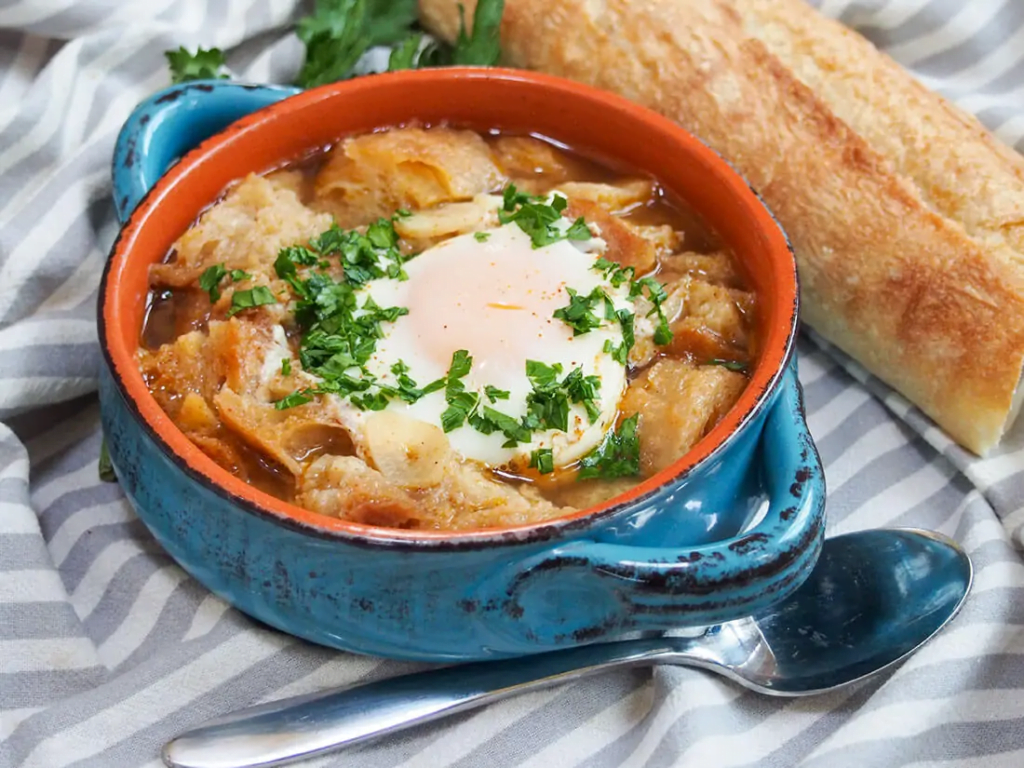
Sopa de Ajo is a testament to the Spanish influence on Dominican cuisine. This garlic-rich soup is both flavorful and comforting.
Dominican Republic Cuisine – Sopa de Ajo Ingredients
- Garlic cloves
- Olive oil
- Stale bread
- Paprika
- Chicken stock
- Eggs
- Salt.
Dominican Republic Cuisine Recipe
- Sauté garlic in olive oil until golden.
- Add bread cubes and paprika.
- Pour in chicken stock.
- Once the soup is simmering, crack in the eggs and let them poach.
Presentation
- Serve the soup hot, ensuring each bowl has a poached egg.
- Garnish with fresh parsley.
Drink Pairing
A glass of light white wine or a lemonade balances the strong garlic flavor.
Dominican Republic Cuisine – La Bandera Dominicana (Dominican Republic national dish)
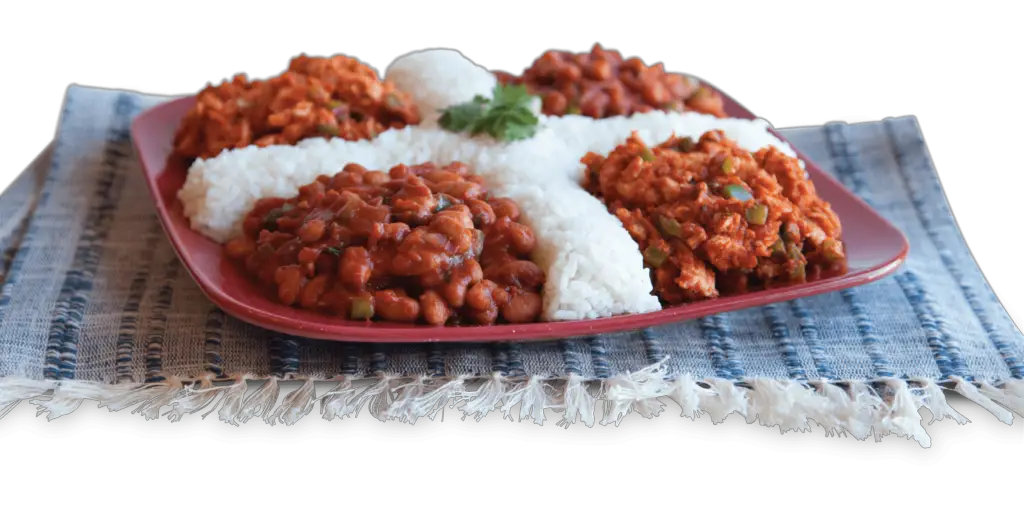
Background and History of La Bandera (Dominican Republic National dish)
La Bandera, the Dominican Republic national dish, is more than a culinary delight; it is a vibrant expression of the nation’s identity and history. The dish’s roots trace back to the convergence of indigenous, Spanish, African, and Middle Eastern influences during the island’s colonial past.
Comprising white rice, red kidney beans, and a savory meat stew, La Bandera mirrors the colors of the national flag. This symbolic representation emerged as a cultural emblem, embodying the unity of diverse influences that define Dominican cuisine.
Served with a side of Morir Soñando, a creamy orange and milk drink, La Bandera not only satisfies the palate but also commemorates the spirit of national pride, family, and the rich tapestry of Dominican heritage.
Dominican Republic Cuisine – La Bandera Dominicana Ingredients
- White rice
- Red kidney beans
- Meat (chicken, beef, or pork)
- Tomatoes
- Bell peppers
- Onions
- Garlic
- Oregano
- Cilantro.
Dominican Republic Cuisine – La Bandera Dominicana Preparation
- Cook white rice separately.
- Prepare a stew with meat, tomatoes, peppers, onions, and spices.
- Simultaneously, make a red bean sauce.
Presentation
- Serve the rice with meat on one side and beans on the other.
- Garnish with fresh cilantro.
Drink Pairing
- A chilled ‘Morir Soñando’ (a creamy orange and milk drink) complements the hearty flavors.
Dominican Republic Cuisine – Sancocho (Dominican Republic National dish)

The Background and History of Sancocho (Dominican Republic national dish)
Sancocho, hailed as the Dominican Republic national dish, is not just a stew; it is a culinary symphony that resonates with the echoes of the island’s diverse history. Rooted in the amalgamation of indigenous, Spanish, African, and Middle Eastern influences, the origins of Sancocho can be traced back to the early colonial period.
The Taino people, the island’s original inhabitants, had a tradition of slow-cooking meats with indigenous vegetables and herbs, laying the foundation for the hearty stews of the Caribbean. With the arrival of the Spanish conquistadors in the 15th century, European ingredients and culinary techniques were seamlessly integrated. The addition of African flavors during the era of the transatlantic slave trade further enriched the culinary landscape.
Sancocho, as it is known today, evolved as a dish deeply rooted in both cultural and familial significance. Often reserved for special occasions, family gatherings, or celebrations, it became a symbol of communal unity. The stew’s preparation involves a diverse medley of meats, such as chicken, beef, and pork, combined with an array of tubers, corn, and seasonings. The slow simmering process allows the flavors to meld, creating a robust and comforting dish. The dish’s versatility is showcased in regional variations, each reflecting the unique culinary traditions of different Dominican communities.
Dominican Republic Cuisine – Sancocho Ingredients
- Various meats (chicken, beef, pork),
- yucca
- plantains
- corn
- potatoes
- cilantro,
- seasonings.
Dominican Republic Cuisine – Sancocho Preparation
- Boil the meats with tubers and corn until tender.
- Season with salt, pepper, and cilantro.
Presentation
- Serve in a deep bowl, ensuring a mix of ingredients is visible.
- Accompany with white rice or avocado slices.
Drink Pairing
- A cold beer or a tamarind juice pairs wonderfully with the robust flavors of Sancocho.
Dominican Republic Cuisine – Pescado con Coco (Fish with Coconut)

Reflecting the coastal heritage of the Dominican Republic, this dish marries fresh fish with the tropical flavor of coconut.
Dominican Republic Cuisine – Pescado con Coco Ingredients
- Fresh fish fillets
- Coconut milk
- Tomatoes
- Bell peppers
- Onions
- Garlic
- Lime
- Cilantro.
Dominican Republic Cuisine – Pescado con Coco Recipe
- Sauté onions, Peppers and Garlic.
- Add the Fish fillets.
- Add Coconut milk, and tomatoes.
- Simmer until fish is cooked through.
Presentation
- Serve the fish hot, drizzled with the coconut sauce.
- Garnish with fresh cilantro and a lime wedge.
Drink Pairing
- A crisp white wine
- Or a coconut water refreshment enhances the tropical experience.
Dominican Republic Cuisine – Habichuelas con Dulce (Sweet Creamed Beans)
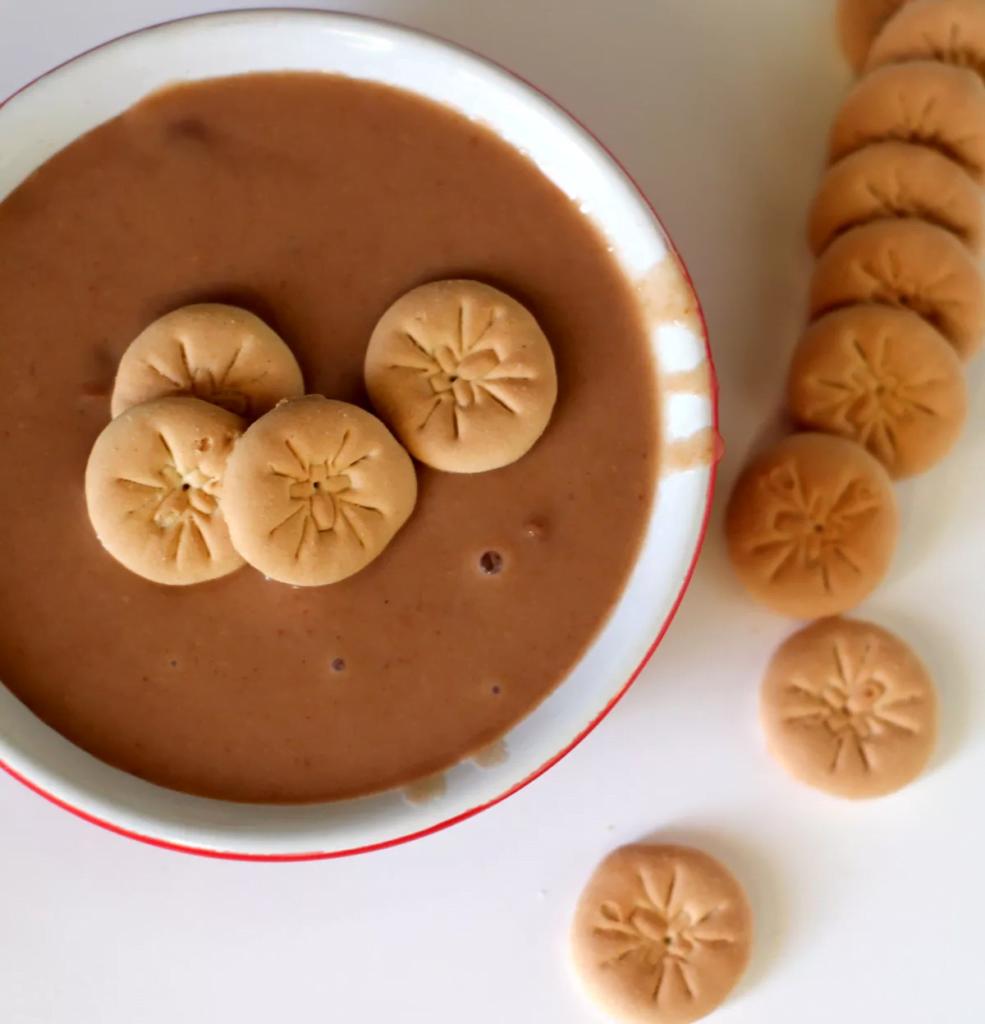
A unique dessert, Habichuelas con Dulce is a sweet concoction made from red beans, a testament to the Dominican Republic’s innovative culinary spirit.
Dominican Republic Cuisine – Habichuelas con Dulce Ingredients
- Red beans
- Coconut milk
- Sugar
- Cinnamon
- Cloves
- Sweet potatoes
- Raisins.
Preparation
- Boil beans until soft.
- Blend them with coconut milk and strain.
- Add sugar, spices, sweet potatoes, and raisins.
- Cook until thickened.
Presentation
- Serve chilled in bowls, topped with milk cookies or a sprinkle of cinnamon.
Drink Pairing
A cup of Dominican coffee or a cinnamon tea complements the sweet and spicy notes.
Dominican Republic Cuisine – Dulce de Leche Cortada (Curded Milk Dessert)
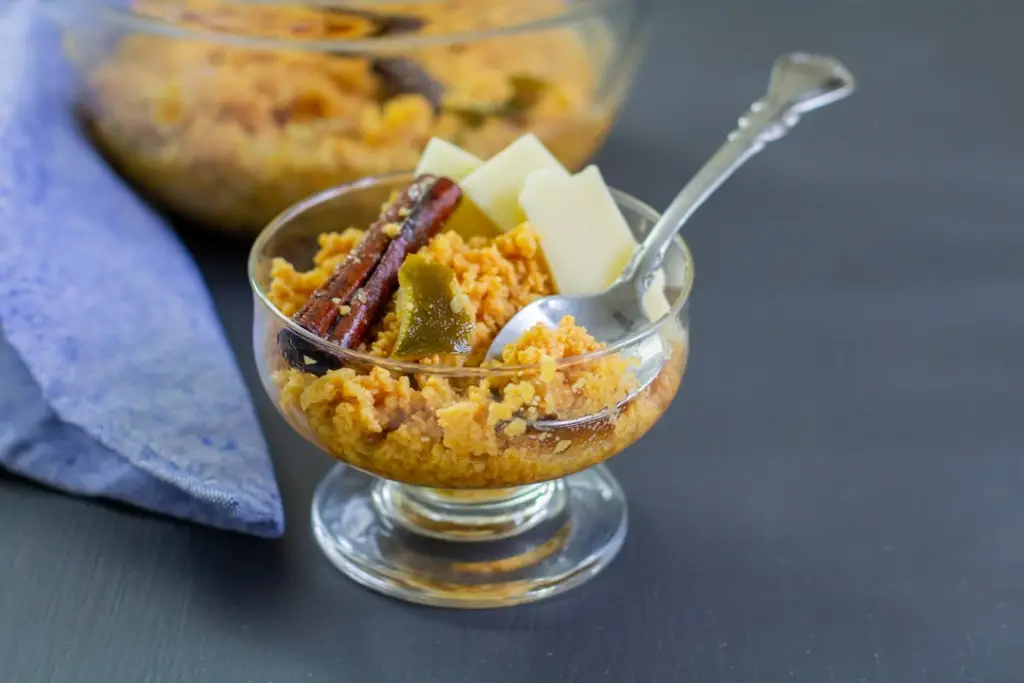
This dessert, made from curdled milk, is a sweet treat that showcases the Dominican love for dairy-based sweets.
Dominican Republic Cuisine – Dulce de Leche Cortada Ingredients
- Milk
- Sugar
- Cinnamon
- Kemon peel
- Eggs.
Dominican Republic Cuisine – Dulce de Leche Preparation
- Heat milk with sugar
- Cinnamon
- Lemon peel until it curdles.
- Add beaten eggs and cook until thickened.
Dulce de Leche Cortada Recipe
- Serve in individual bowls, garnished with a cinnamon stick.
Drink Pairing
A glass of ‘Ron Ponche,’ a Dominican rum punch, adds a delightful kick.
Conclusion
while Cuban cuisine might be widely recognized, the Dominican Republic offers a culinary journey that’s rich, diverse, and deeply rooted in its history and culture. From hearty stews to sweet concoctions, Dominican dishes are a testament to the country’s vibrant spirit and love for food.
Q&A‘s
What are the characteristics of Cuisine of the Dominican Republic
The cuisine of the Dominican Republic is rich and diverse, blending indigenous, African, and European flavors. Staple ingredients include rice, beans, meat, and tropical fruits like plantains.
Popular dishes include sancocho (a hearty soup), mofongo (mashed plantains), and pastelón (a sweet and savory plantain casserole). The cuisine reflects the country’s vibrant cultural heritage.
How has the history of the Dominican Republic influenced its culinary landscape?
The Dominican Republic’s culinary scene is a reflection of its rich history, blending indigenous, Spanish, African, and other cultural influences. This fusion is evident in dishes like La Bandera, representing the diverse heritage of the island.
What role does geography play in shaping the flavors of Dominican cuisine?
The country’s tropical climate and diverse geography significantly impact its cuisine. Coastal areas inspire seafood-infused dishes like Pescado con Coco, while mountainous regions contribute to hearty stews like Sancocho, showcasing the variety of flavors from land and sea.
What are the health implications of Dominican cuisine?
While the food tastes are exceptional moderation is needed
What is the Dominican Republic National dish?
There are two dashes that qualify as the Dominican Republic National dish.
Dominican Republic National Dish Sancocho No 1
This hearty stew is a staple in the Dominican diet and is enjoyed by locals and visitors alike. Made with a variety of meats, including beef, chicken, and pork, sancocho is typically accompanied by a medley of root vegetables such as yucca, plantains, and potatoes.
Dominican Republic National Dish La Bandera Dominicana No 2
“La Bandera Dominicana” is the Dominican Republic National dish representing the colors of the national flag. It consists of a harmonious blend of rice, beans, and meat.
This culinary masterpiece embodies both national pride and the essence of Dominican cuisine.
What are some key ingredients in Dominican desserts?
Desserts like Habichuelas con Dulce feature unique combinations such as red beans, coconut milk, and sweet potatoes. This reflects the innovative spirit of Dominican cuisine, blending traditional elements in unexpected ways to create sweet and spicy notes.
How do you balance traditional flavors with health-conscious choices in Dominican cuisine?
Appreciate the variety of offerings in Dominican food while being mindful of portion sizes. The diet uses fresh produce, lean meats, and aromatic herbs and spices for both flavor and potential health benefits, promoting a holistic dining experience.

